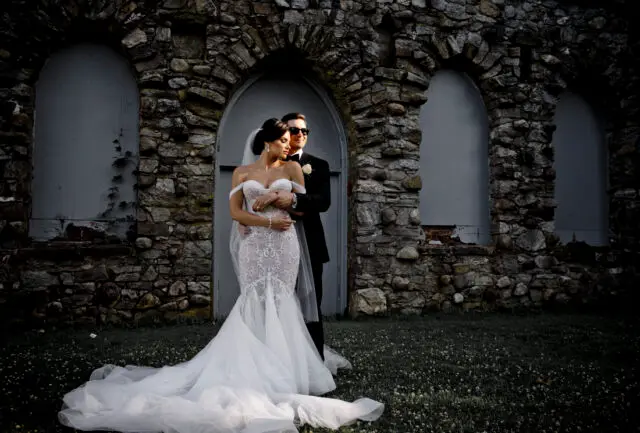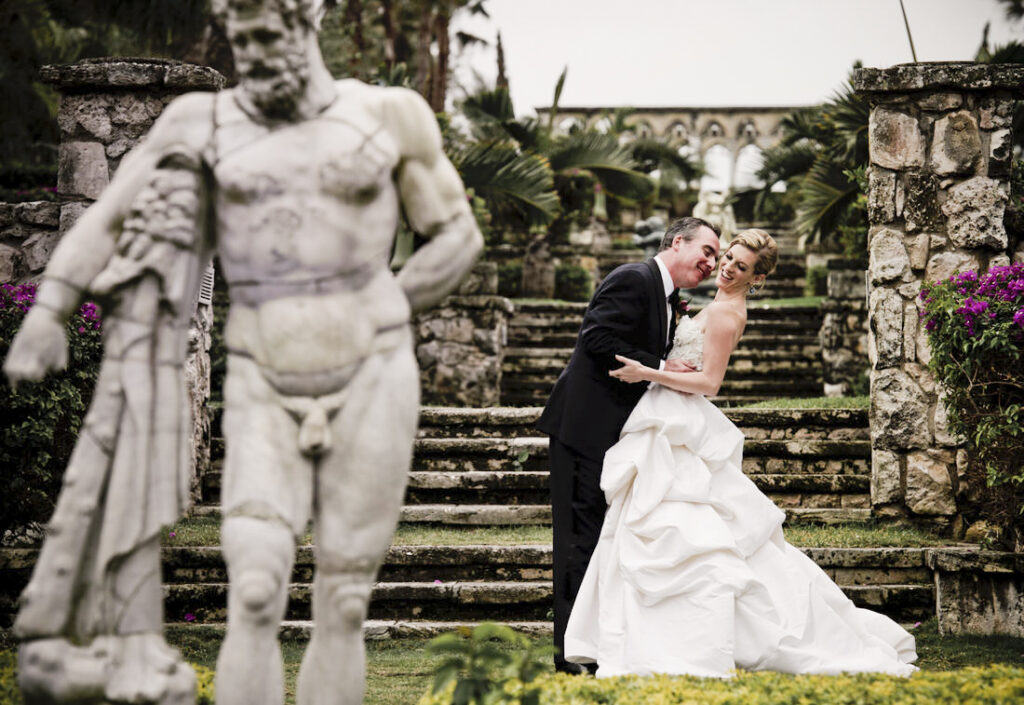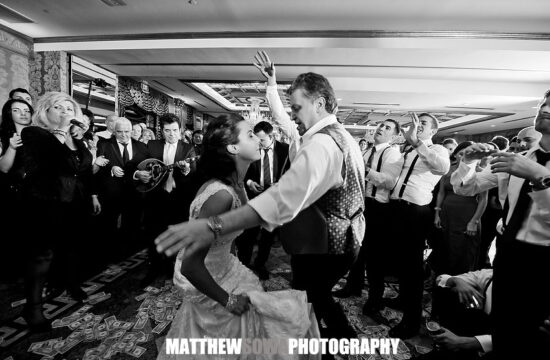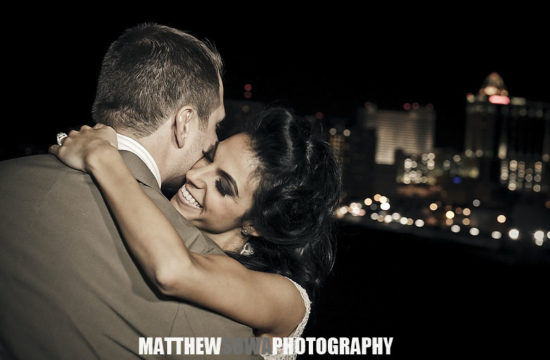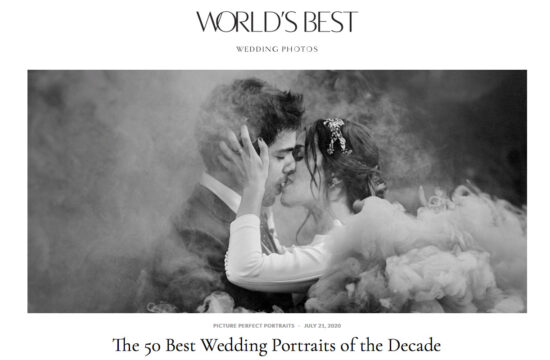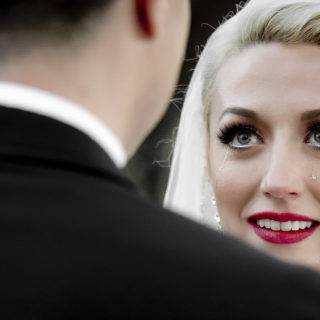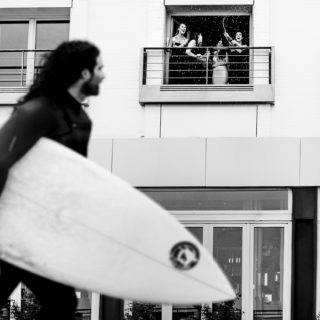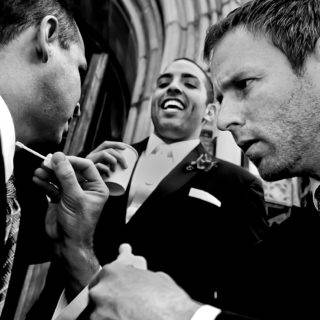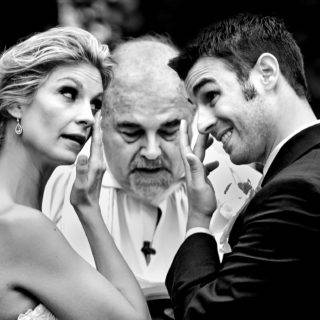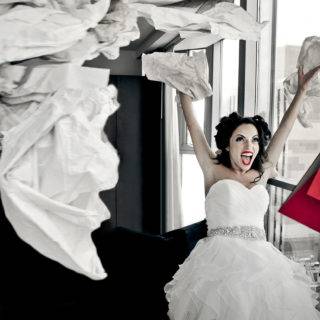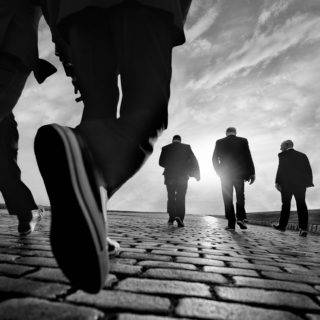Are you planning a wedding in the bustling city of New York? If so, you’re in luck! Finding a skilled and experienced NYC wedding photographer is crucial to capturing those special moments on your big day. With their distinguished expertise and vision, they can bring your unique love story to life through stunning photographs.
In this comprehensive guide, we will explore the various wedding photography styles that wedding photographers excel in. From timeless and classic to modern and edgy, there is a style to suit every couple’s taste and personality. We will delve into the characteristics of each style, highlighting the key elements that make them stand out.
Whether you envision a romantic outdoor ceremony amidst New York City’s iconic skyline or an intimate celebration in one of the city’s charming venues, this guide will help you navigate through the world of wedding photography styles. By understanding these different approaches, you can collaborate effectively with your chosen wedding photographer to ensure that every precious moment is beautifully captured.
In addition to style compatibility, consider factors such as experience, professionalism, pricing packages, and reviews when selecting your wedding photographer. You want someone who not only has technical expertise but also makes you feel comfortable and confident throughout the entire process.
Your wedding day is an occasion filled with love, joy, and cherished memories. With the right wedding photographer by your side – someone who understands your style preferences – you can trust that every precious moment will be captured beautifully forever.
So let’s embark on this journey together as we explore various photography styles offered by NYC Wedding Photographers – finding the perfect fit for your dream New York City wedding!
Here’s a comprehensive guide to various wedding photography styles:
Traditional/Classic Style:
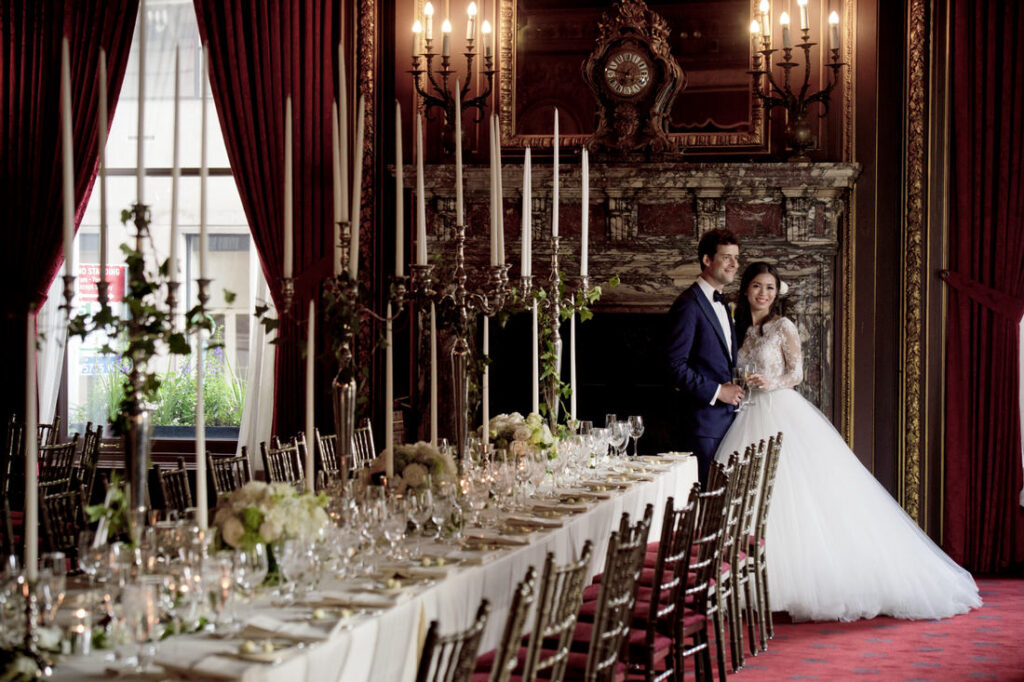
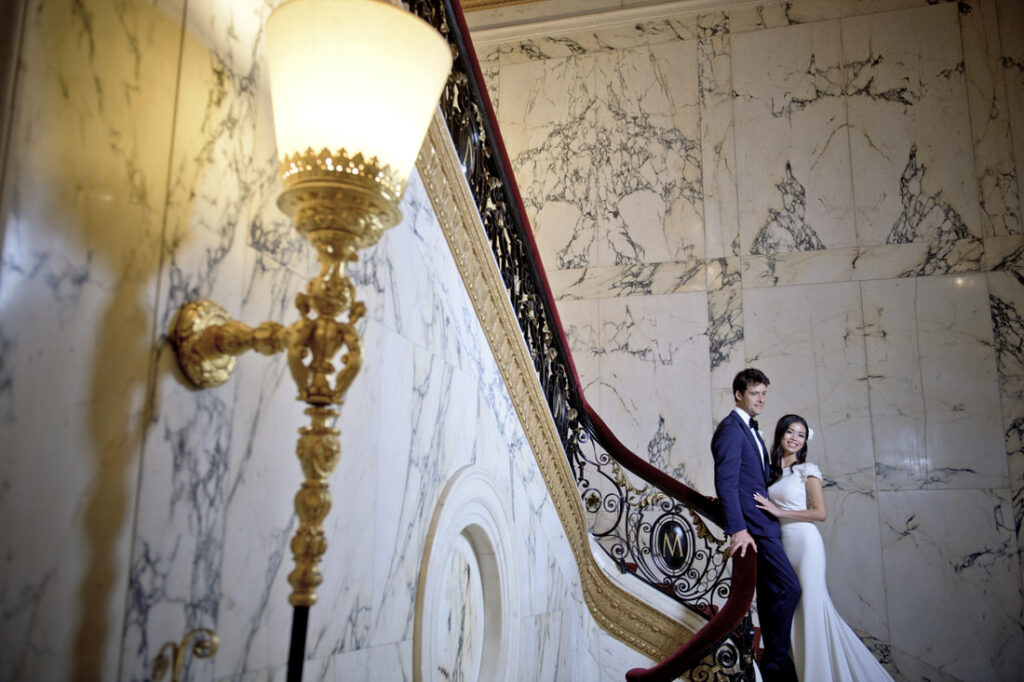
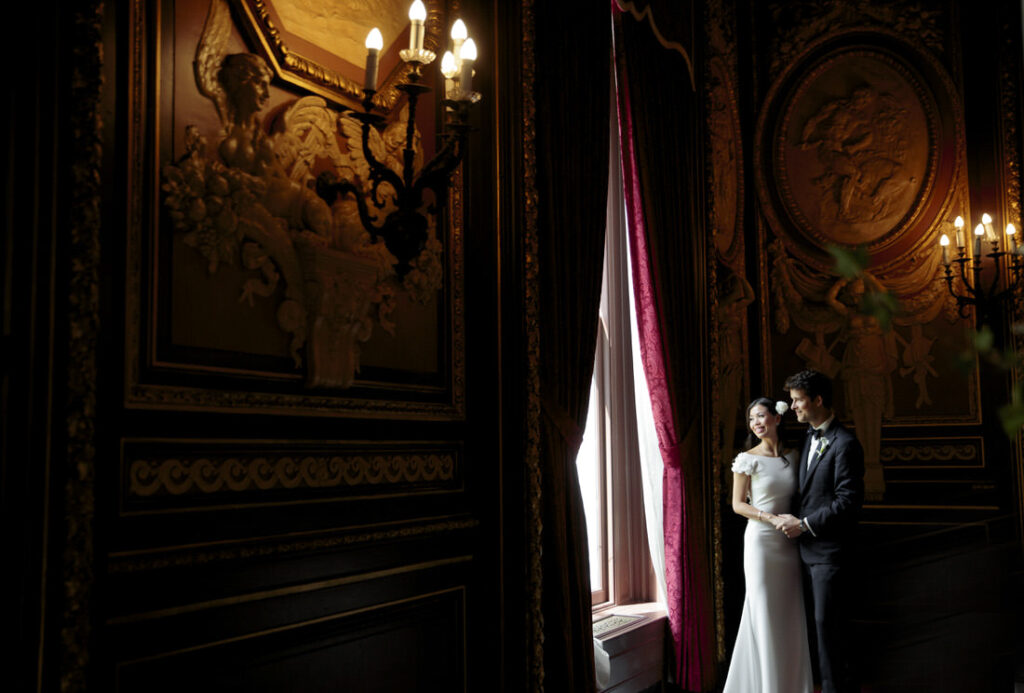
Description: Classic wedding photography involves capturing posed and formal shots. It includes traditional group photos, portraits, and shots of key moments like the exchange of vows
Key Characteristics: Posed, formal, structured, and timeless. Traditional wedding photography refers to the style of photography that captures the key moments and formal poses during a wedding ceremony and reception. This style often includes classic and timeless shots, focusing on the essential elements of the wedding day. Here are some key features and aspects of traditional wedding photography:
Formal Poses:
Traditional wedding photography typically involves posed shots of the couple, bridal party, and family members. These poses are often more structured and may include specific compositions that highlight the individuals or groups.
Key Moments:
The photographer aims to capture important moments such as the exchange of vows, the ring exchange, the first kiss, and other significant parts of the ceremony. These shots are carefully planned and framed to tell the story of the wedding day.
Group Photos:
Group shots are a common element of traditional wedding photography. These include family portraits, shots of the entire bridal party, and sometimes extended family or friend group photos.
Posed Portraits:
The photographer works closely with the couple to capture beautifully posed portraits that showcase the bride and groom in a more formal setting. These shots often emphasize the attire, accessories, and overall look of the couple.
Traditional Settings:
The locations chosen for photography are often traditional and classic, such as churches, gardens, or other scenic venues. The emphasis is on creating a timeless and elegant visual narrative.
Attention to Detail:
Traditional wedding photographers pay attention to details like the bride’s bouquet, the wedding rings, the wedding cake, and other elements that contribute to the overall aesthetic of the wedding.
Directed Photography:
The photographer typically takes a more active role in directing the subjects to achieve the desired poses and compositions. This involves providing guidance on where to stand, how to pose, and ensuring everyone looks their best.
Post-Processing:
Post-processing in traditional wedding photography often involves color correction, retouching, and enhancing the images to achieve a polished and cohesive look.
While traditional wedding photography remains popular, many couples also opt for a blend of styles, incorporating elements of photojournalism or candid shots to capture the spontaneous and emotional moments of the day. Couples may choose a photographer based on their individual preferences and the overall style that best suits their vision for documenting their wedding day.
Photojournalistic/Documentary Style:
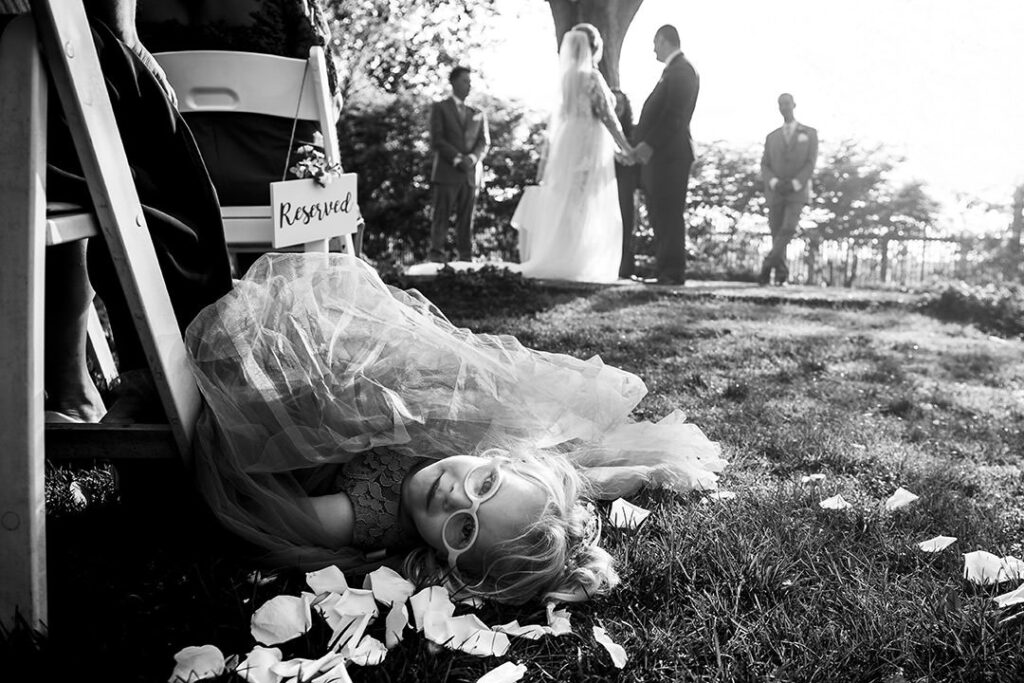
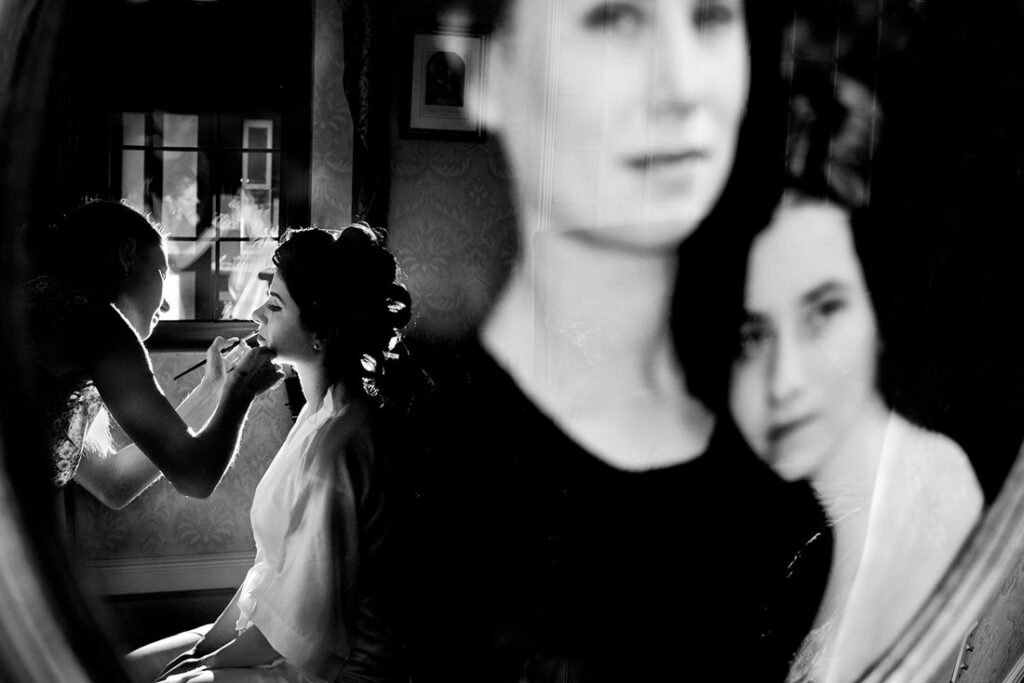
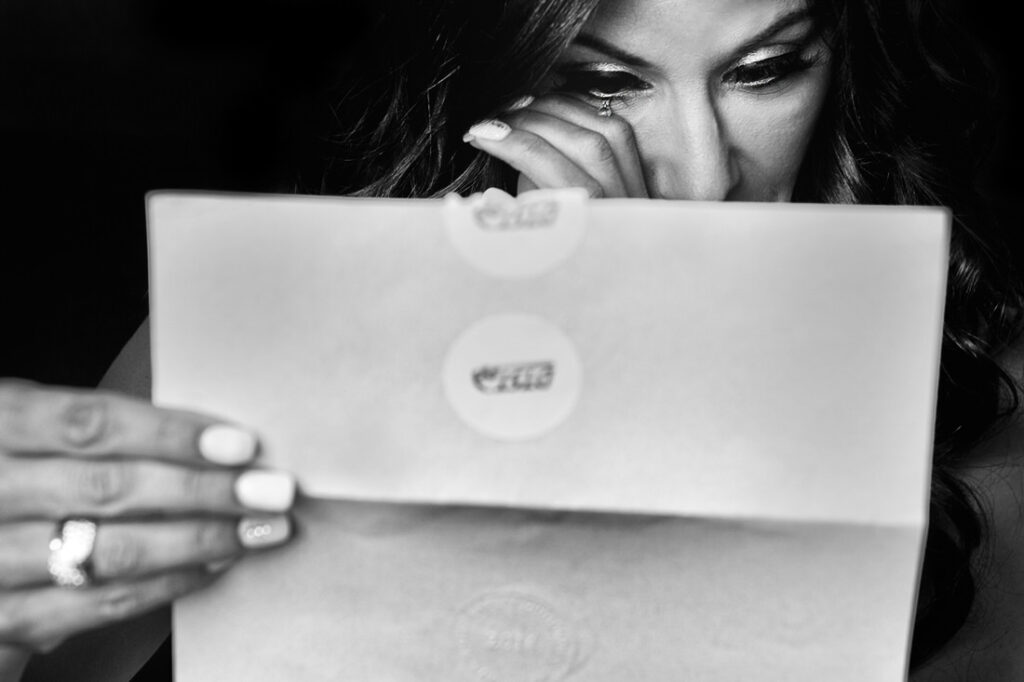
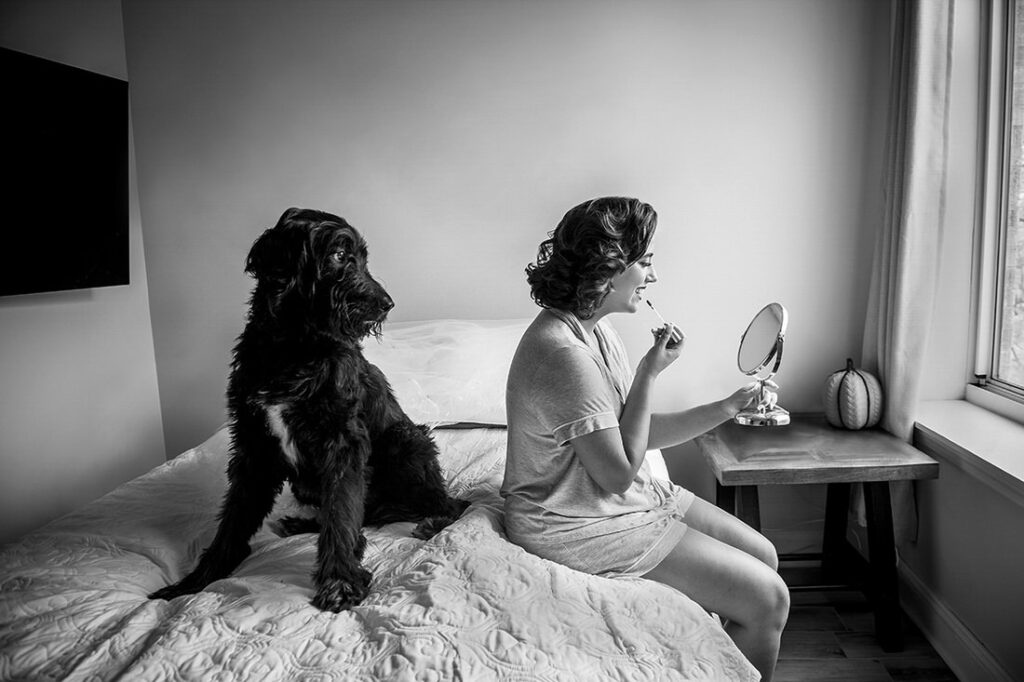
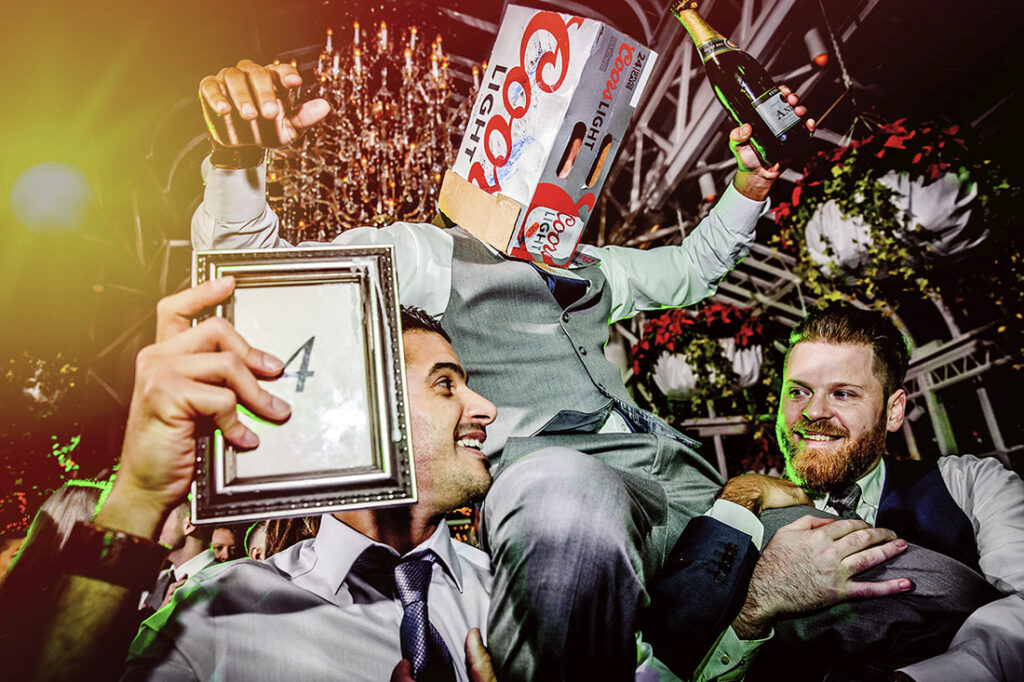
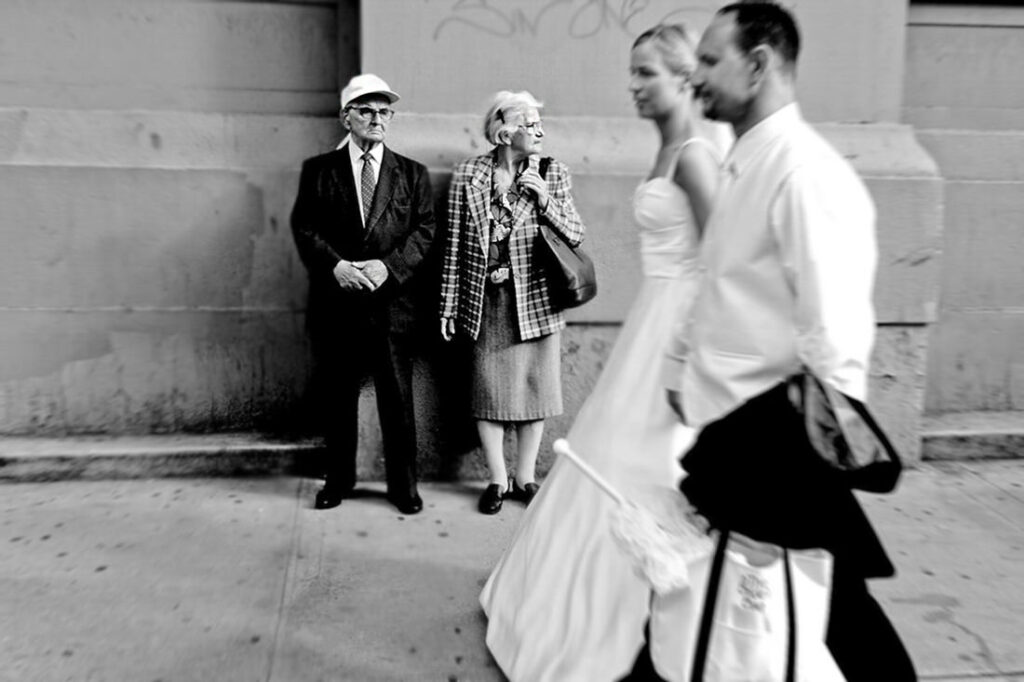
Description: This style focuses on capturing candid moments as they happen, telling the story of the day naturally without much interference.
Key Characteristics: Candid, unposed, storytelling, and documentary. Candid or documentary wedding photography is a style that focuses on capturing natural, unposed moments and emotions throughout the wedding day. Instead of relying on staged poses and formal setups, candid wedding photographers aim to tell a story by documenting genuine interactions, emotions, and spontaneous events. Here are key features and aspects of candid or documentary wedding photography:
- Unobtrusive Approach:
- Candid wedding photographers adopt a fly-on-the-wall approach, aiming to blend into the background and capture moments as they unfold naturally. This approach allows for a more authentic representation of the day.
- Storytelling:
- The emphasis is on storytelling, capturing the chronological sequence of events and the emotional journey of the day. Photographers aim to create a narrative that reflects the real atmosphere and emotions of the wedding.
- Emotional Moments:
- Candid wedding photography excels at capturing emotional moments such as laughter, tears, hugs, and other spontaneous expressions. These shots convey the genuine feelings of the couple and their guests.
- Documenting the Details:
- In addition to capturing emotions, candid photographers pay attention to the smaller details that contribute to the overall atmosphere of the wedding, including decorations, the venue, and candid interactions between guests.
- Minimal Posed Shots:
- While there may be some posed shots, the focus is on capturing the natural interactions between people rather than creating formal, staged compositions. Posed portraits are often kept to a minimum.
- Photojournalistic Style:
- Candid wedding photography often draws inspiration from photojournalism, with photographers capturing moments as a photojournalist would document a news story. This style aims to be unobtrusive and documentary in nature.
- Capturing Spontaneity:
- The photographer aims to capture the unexpected and spontaneous moments that make each wedding unique. This could include candid reactions, unplanned events, and unscripted interactions.
- Use of Natural Light:
- Candid photographers often rely on natural light to capture the authenticity of the moment. This can result in a more organic and genuine feel to the images.
- Post-Processing Style:
- Post-processing for candid wedding photography typically involves minimal retouching, with an emphasis on preserving the natural and unfiltered look of the images. The goal is to maintain the authenticity of the captured moments.
Couples who appreciate a more natural and documentary approach to wedding photography often choose candid photographers to capture the essence of their special day. The resulting images provide a candid and emotional portrayal of the wedding, allowing the couple to relive the moments as they truly happened.
Fine Art Style:
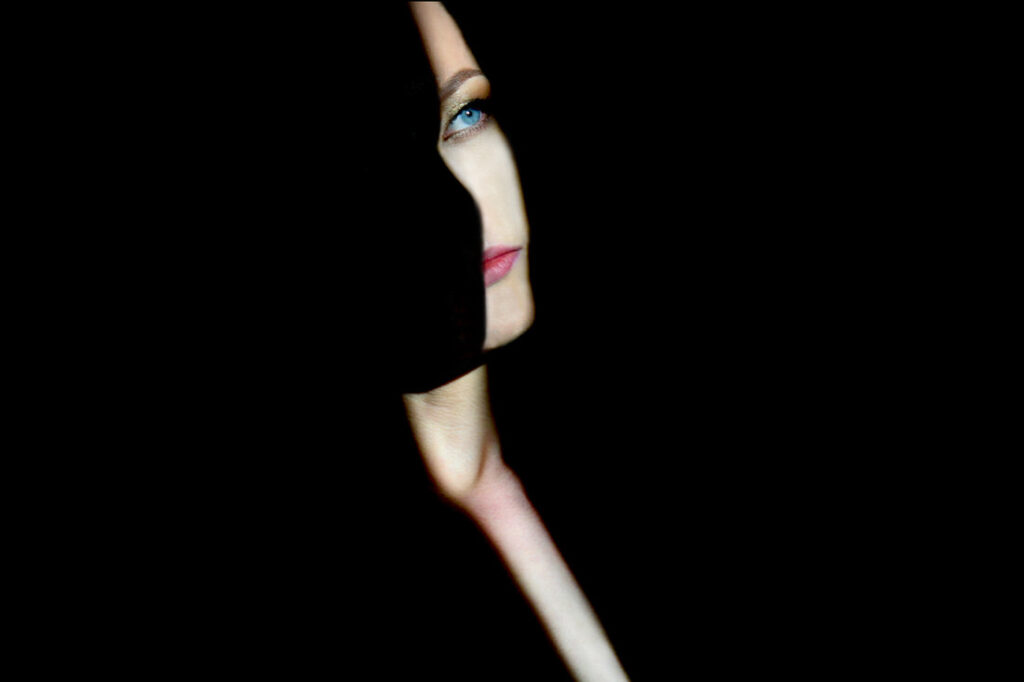
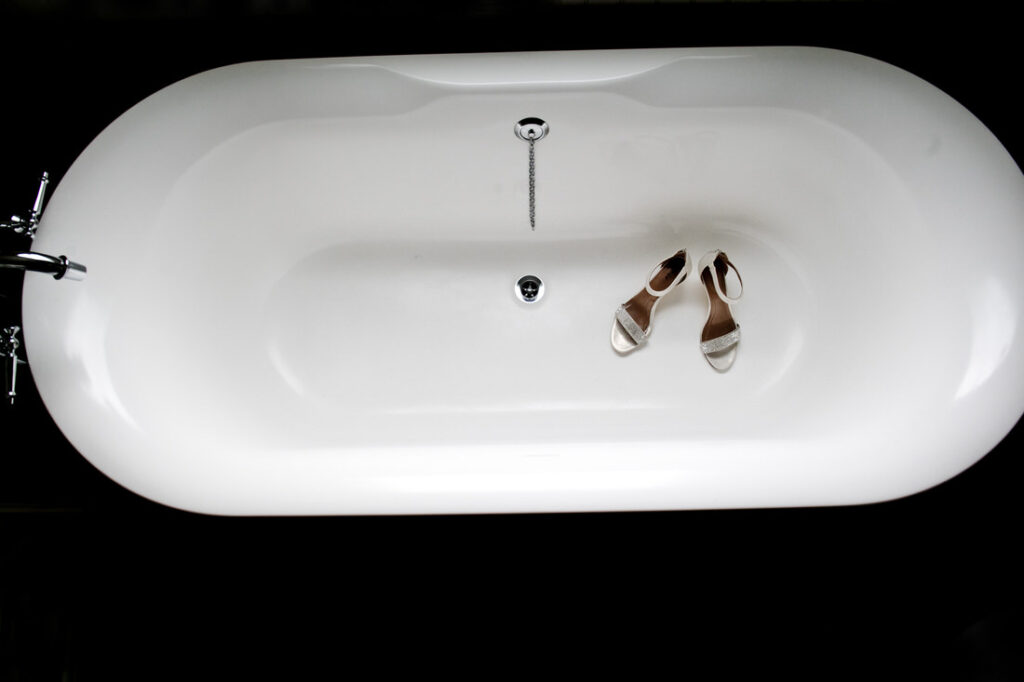
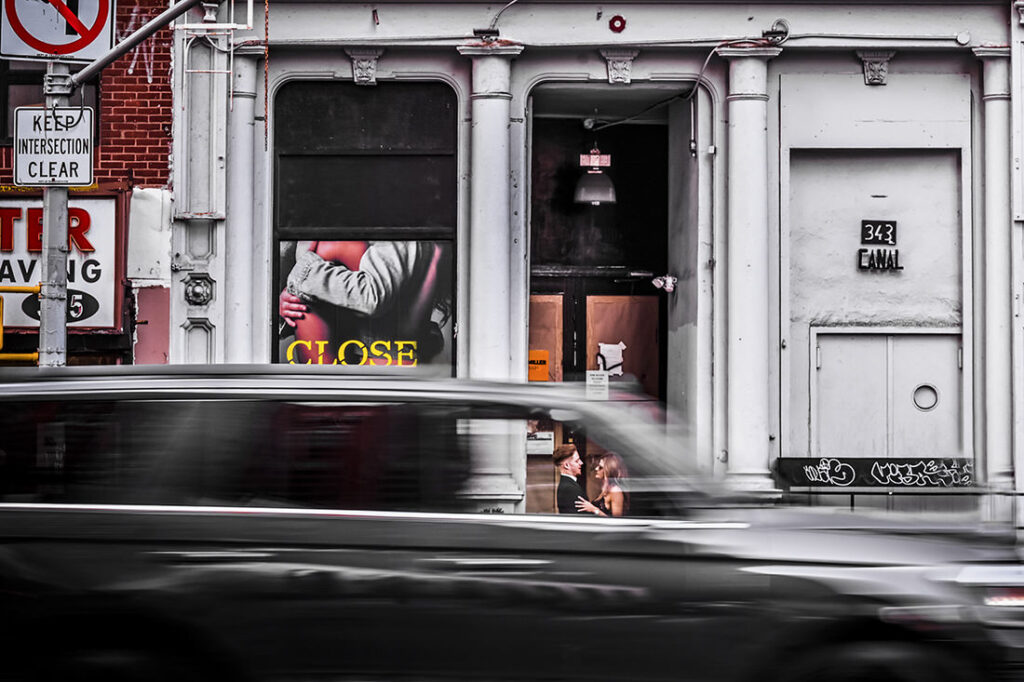
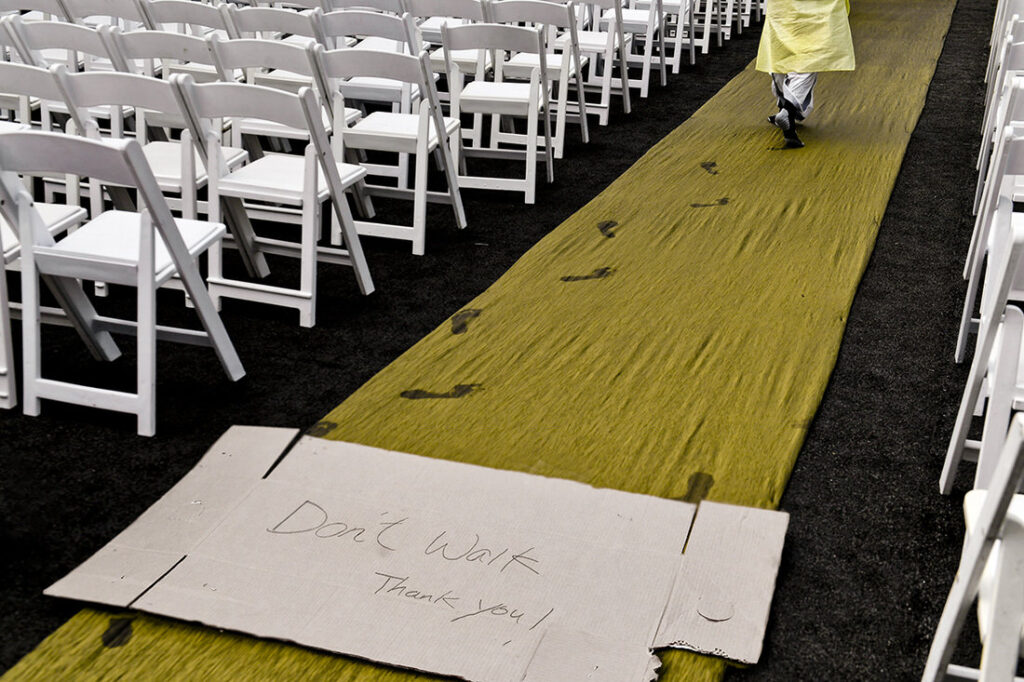 Description: Fine art wedding photography involves creating images that are visually stunning and often have a creative or artistic touch. It emphasizes composition, lighting, and post-processing.
Description: Fine art wedding photography involves creating images that are visually stunning and often have a creative or artistic touch. It emphasizes composition, lighting, and post-processing.
Key Characteristics: Artistic, creative, and visually striking. Fine art wedding photography is a style that goes beyond simply documenting the events of the day; it focuses on creating visually stunning and artistic images that are often characterized by their creativity, composition, and attention to detail. This style often incorporates elements of fashion photography and portraiture. Here are key features and aspects of fine art wedding photography:
- Artistic Composition:
- Fine art wedding photographers pay meticulous attention to composition, framing, and visual aesthetics. They strive to create images that are not only technically proficient but also artistically compelling.
- Creative Posing:
- This style often involves more creative and stylized posing of the couple and the bridal party. The photographer may use unique angles, lighting, and settings to create visually striking and dramatic portraits.
- Attention to Details:
- Fine art wedding photographers focus on capturing the small details of the wedding day, such as the rings, flowers, invitations, and other elements that contribute to the overall ambiance and theme.
- Use of Natural Light and Artificial Lighting:
- Fine art photographers often leverage natural light and may also incorporate artificial lighting to create a specific mood or enhance the visual impact of the images. This can include backlighting, silhouettes, and creative lighting setups.
- Editorial Style:
- The style is often influenced by editorial photography, with images that look like they could be featured in a high-end magazine. This may involve storytelling through a series of carefully curated images.
- Film-Inspired Look:
- Some fine art wedding photographers draw inspiration from film photography, aiming to achieve a timeless and classic look reminiscent of film aesthetics. This can include the use of film-like tones and grain.
- Post-Processing Techniques:
- Post-processing plays a significant role in fine art wedding photography. Photographers may use editing techniques to enhance colors, create a specific mood, or add a touch of vintage or cinematic feel to the images.
- Emphasis on Fine Prints:
- Fine art wedding photographers often provide high-quality prints as part of their services. The goal is to present the images as tangible pieces of art that can be displayed in albums, frames, or other artistic formats.
- Personalized Style:
- Each fine art wedding photographer may have a unique and distinctive style. Couples often choose a fine art photographer based on their personal preferences for artistic expression.
Fine art wedding photography is well-suited for couples who appreciate a more stylized and artistic approach to capturing their wedding day. The resulting images are often visually stunning and can be cherished as works of art that reflect the couple’s individual style and the beauty of their celebration.
Editorial Style:
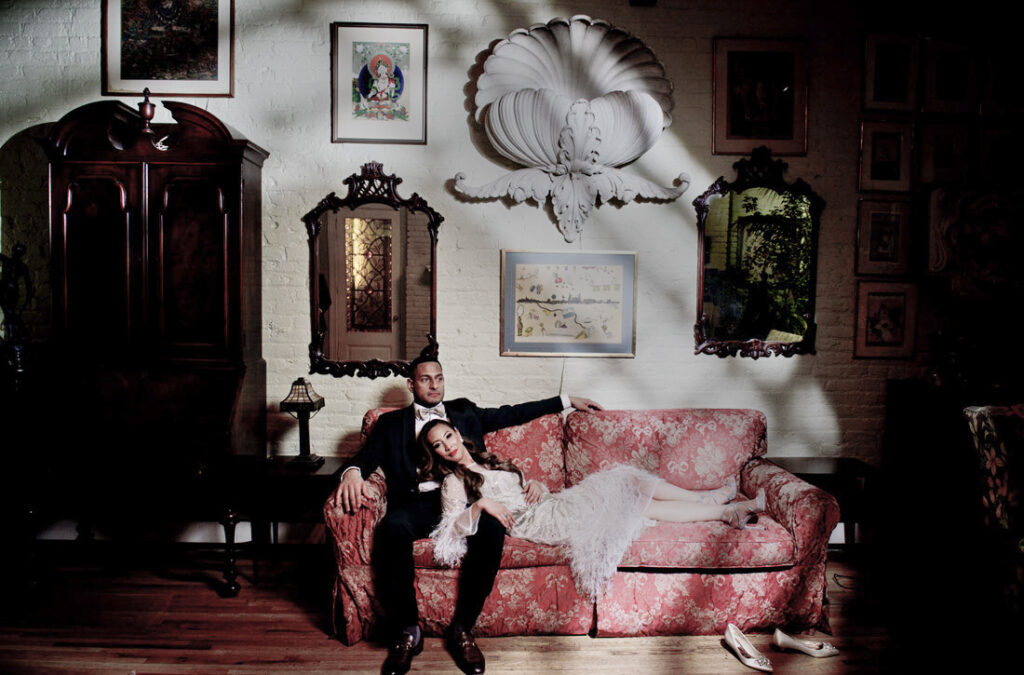
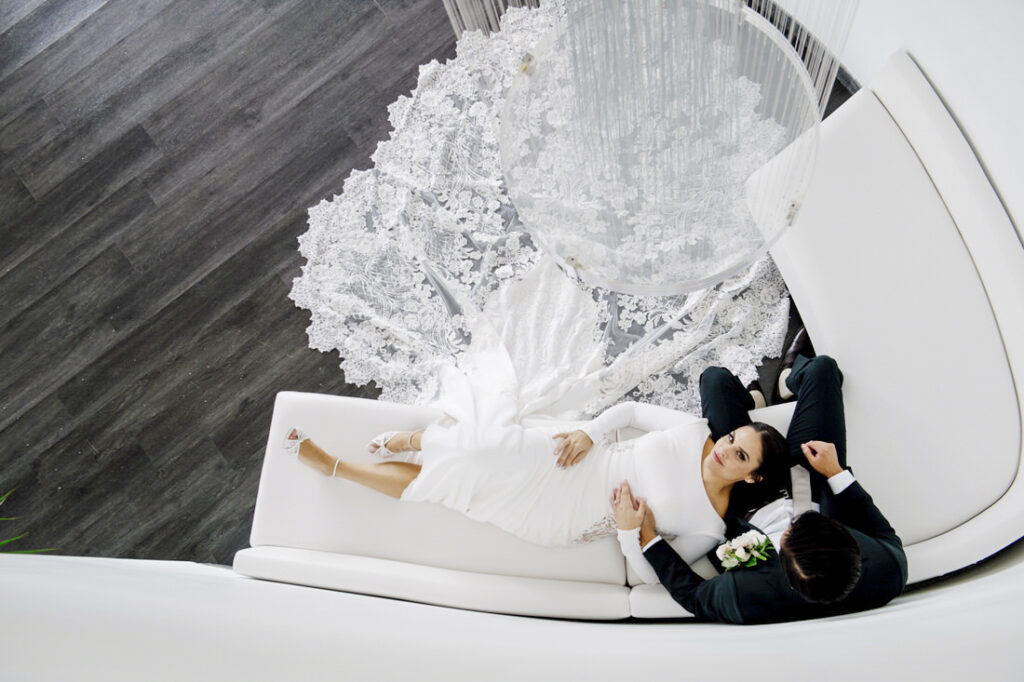
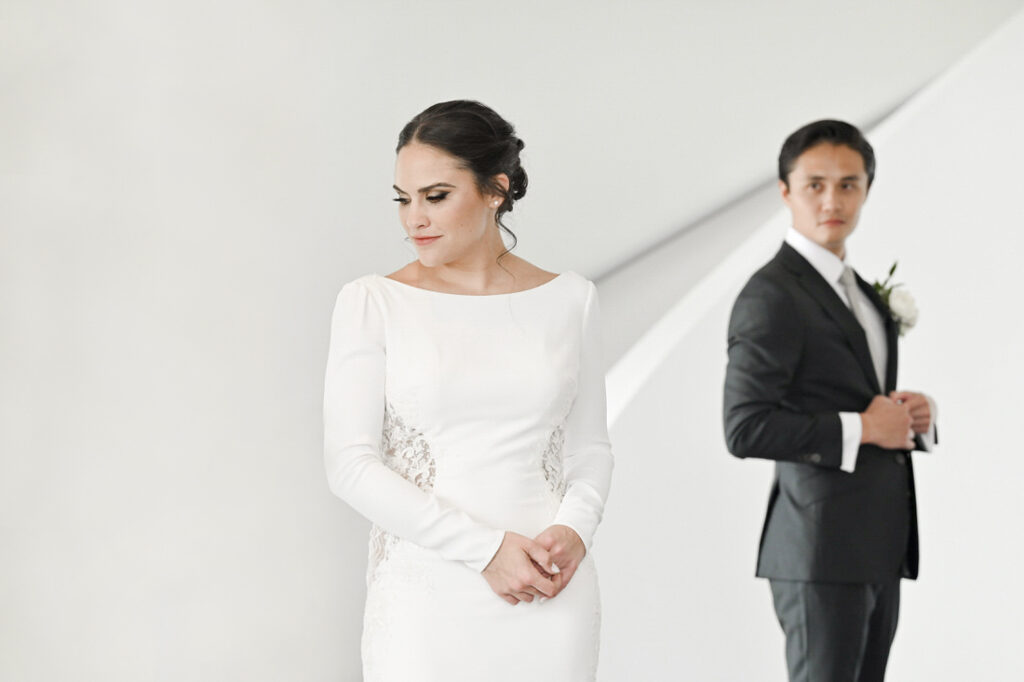
Description: This style incorporates elements of fashion photography. It involves posing couples in a stylized manner, paying attention to clothing, accessories, and overall aesthetics.
Key Characteristics: Stylish, posed, and editorial. Editorial wedding photography draws inspiration from the world of fashion and lifestyle magazines. This style aims to capture the essence of a wedding day in a storytelling manner, producing images that are not only visually stunning but also convey a sense of narrative and emotion. Here are key features and aspects of editorial wedding photography:
- Storytelling Narrative:
- Editorial wedding photography focuses on telling a cohesive and compelling story of the wedding day. The photographer captures a series of images that flow together, creating a visual narrative from start to finish.
- Candid Moments:
- While there may be some posed shots, editorial wedding photographers also emphasize capturing candid and spontaneous moments. This adds authenticity to the storytelling and helps convey genuine emotions.
- Fashion-Inspired Posing:
- The posing in editorial wedding photography often takes inspiration from fashion photography. The photographer may direct the couple and the bridal party in a way that exudes style, sophistication, and a sense of editorial fashion.
- Attention to Details:
- Details play a crucial role in editorial wedding photography. Photographers pay close attention to the wedding attire, accessories, decor, and other elements that contribute to the overall aesthetic and theme of the day.
- Creative Techniques:
- Editorial photographers use creative techniques to add an artistic and editorial flair to their images. This may include experimenting with unique angles, framing, and lighting to create visually stunning and distinctive shots.
- Carefully Chosen Locations:
- The choice of locations for photography is essential in editorial wedding photography. Photographers seek out interesting and visually appealing backdrops that complement the overall style and theme of the wedding.
- Post-Processing for a Polished Look:
- Post-processing plays a significant role in achieving the polished and cohesive look characteristic of editorial wedding photography. This may involve color grading, retouching, and other editing techniques to enhance the overall aesthetic.
- Collaboration with Clients:
- Editorial photographers often collaborate closely with couples to understand their vision and preferences. This ensures that the images align with the couple’s style and the overall theme of the wedding.
- Publication-Ready Imagery:
- Editorial wedding photos are often intended to be “publication-ready,” resembling the polished and high-quality images found in fashion and lifestyle magazines. This attention to detail contributes to the overall editorial look.
Couples who are drawn to a sophisticated, stylish, and narrative-driven approach often choose editorial wedding photography. The resulting images are not just individual shots but a carefully curated collection that tells the unique story of the couple’s wedding day.
Vintage/Retro Style:
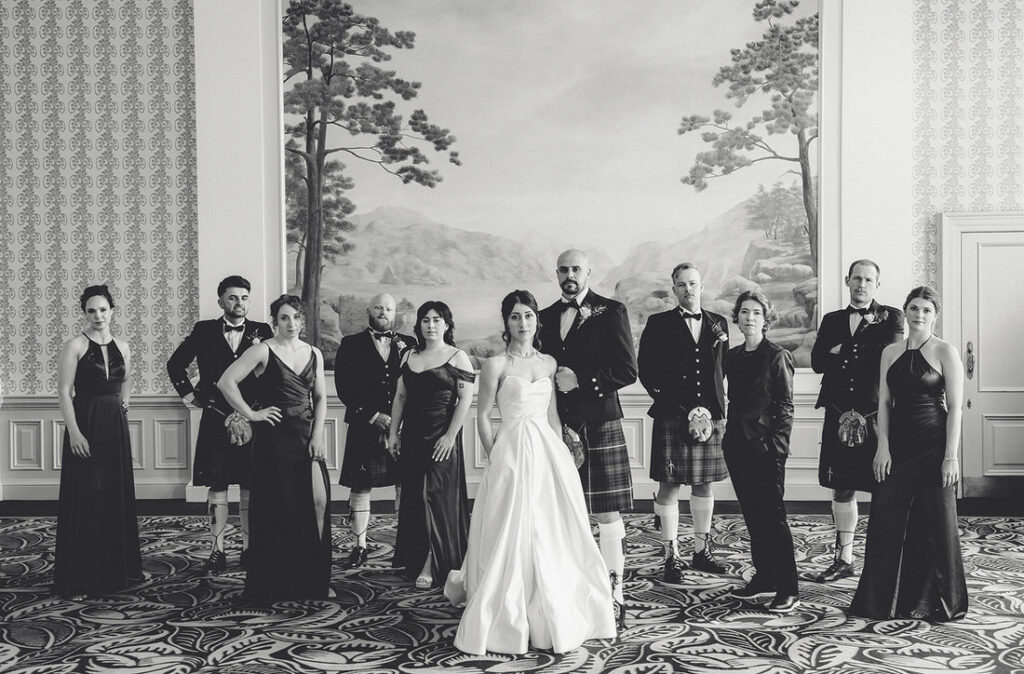
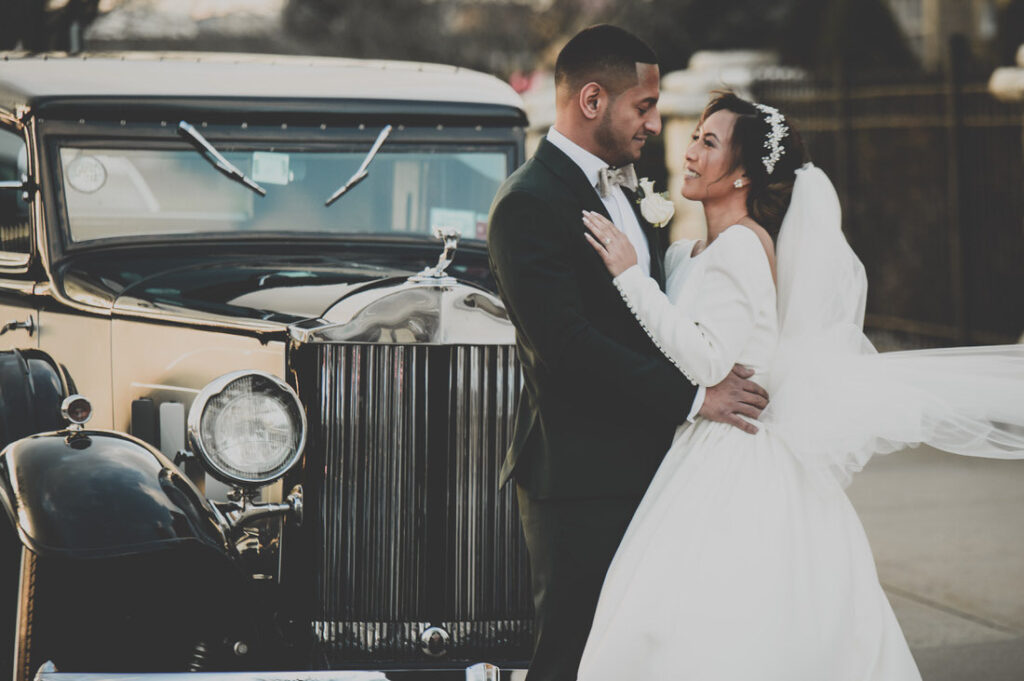
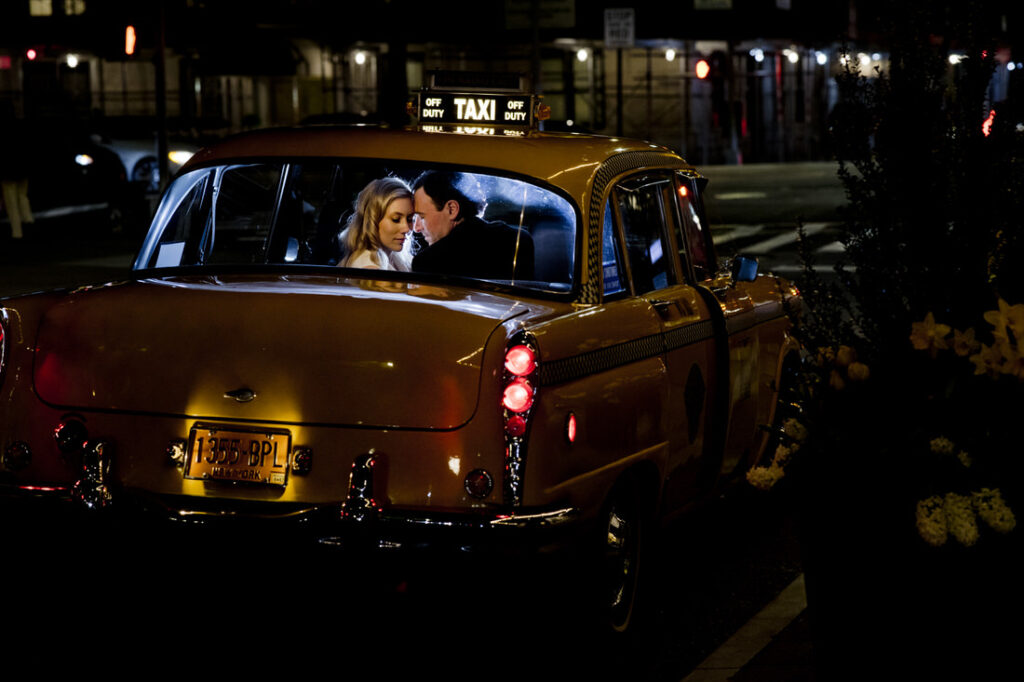
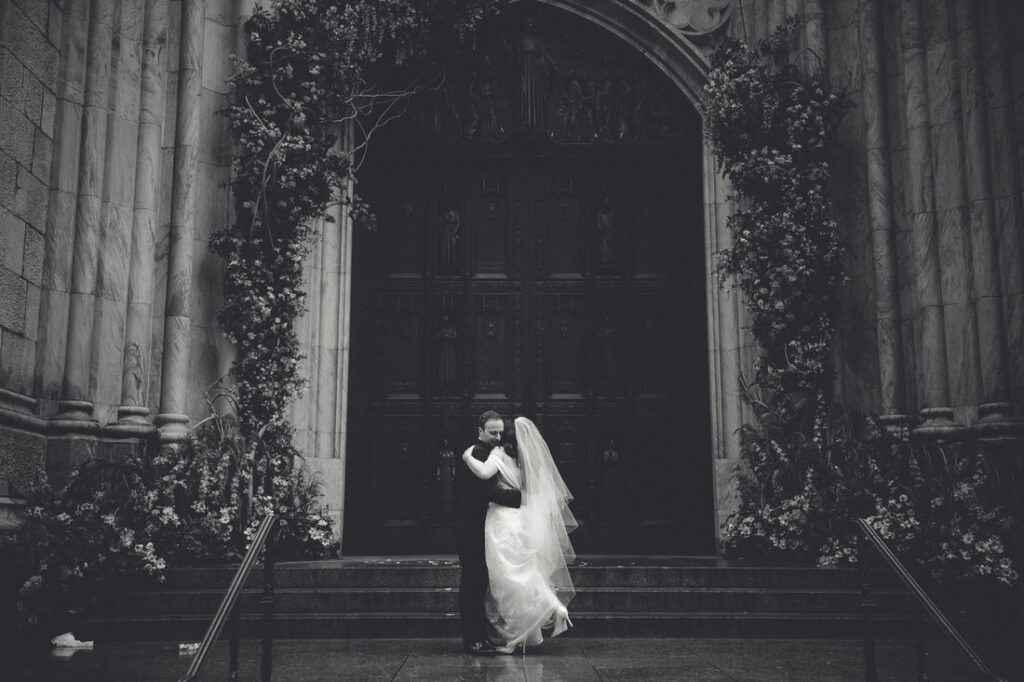
Description: This style aims to evoke a sense of nostalgia by using filters, tones, and editing techniques that give the images a vintage or retro look.
Key Characteristics: Nostalgic, retro, and timeless. Vintage retro wedding photography is a style that takes inspiration from the aesthetics of bygone eras, often evoking the charm and nostalgia of the past. This style aims to capture the essence of a vintage or retro theme, incorporating elements that reflect a specific era or a combination of different periods. Here are key features and aspects of vintage retro wedding photography:
- Nostalgic Aesthetics:
- Vintage retro wedding photography embraces the nostalgic aesthetics of past eras, such as the 1920s, 1950s, or 1970s. The photographer may use specific editing techniques to give the images a timeless and aged look.
- Vintage Attire and Styling:
- Couples and the bridal party may choose attire and styling that reflects a specific era. This can include vintage dresses, suits, hairstyles, and accessories that capture the fashion of a particular time.
- Antique Props and Decor:
- The use of antique props and decor contributes to the vintage retro atmosphere. This could involve incorporating items such as vintage cars, typewriters, gramophones, or other elements reminiscent of the chosen era.
- Sepia Tones and Film Grain:
- Vintage retro photography often involves using sepia tones, muted colors, and film grain to recreate the look of old photographs. This adds to the overall vintage feel of the images.
- Classic Poses and Compositions:
- Photographers may use classic poses and compositions that were popular in the chosen era. This can include formal and posed shots that reflect the traditional style of wedding photography from that time.
- Location Selection:
- Choosing locations that have a vintage feel or are architecturally significant from a particular era enhances the overall theme. Historic venues, rustic barns, or locations with distinctive architectural features can contribute to the vintage atmosphere.
- Vintage Photo Editing Styles:
- Vintage retro wedding photos often undergo specific editing styles to achieve the desired look. This may include adjustments to contrast, saturation, and the addition of vignettes to replicate the appearance of vintage photographs.
- Storytelling Through Imagery:
- Vintage retro wedding photography often focuses on telling a visual story that transports viewers to a different time. The images work together to create a narrative that reflects the couple’s chosen vintage theme.
- Customization for Each Era:
- Depending on the couple’s preferences, the photographer may customize the vintage retro theme to a specific era or blend elements from different time periods. This allows for a unique and personalized interpretation of the vintage aesthetic.
Couples who appreciate the charm and character of past eras, and want to infuse their wedding with a sense of nostalgia, often opt for vintage retro wedding photography. The result is a collection of images that not only document the wedding day but also transport viewers to a different time and evoke a strong sense of sentimentality.
Natural Light Style:
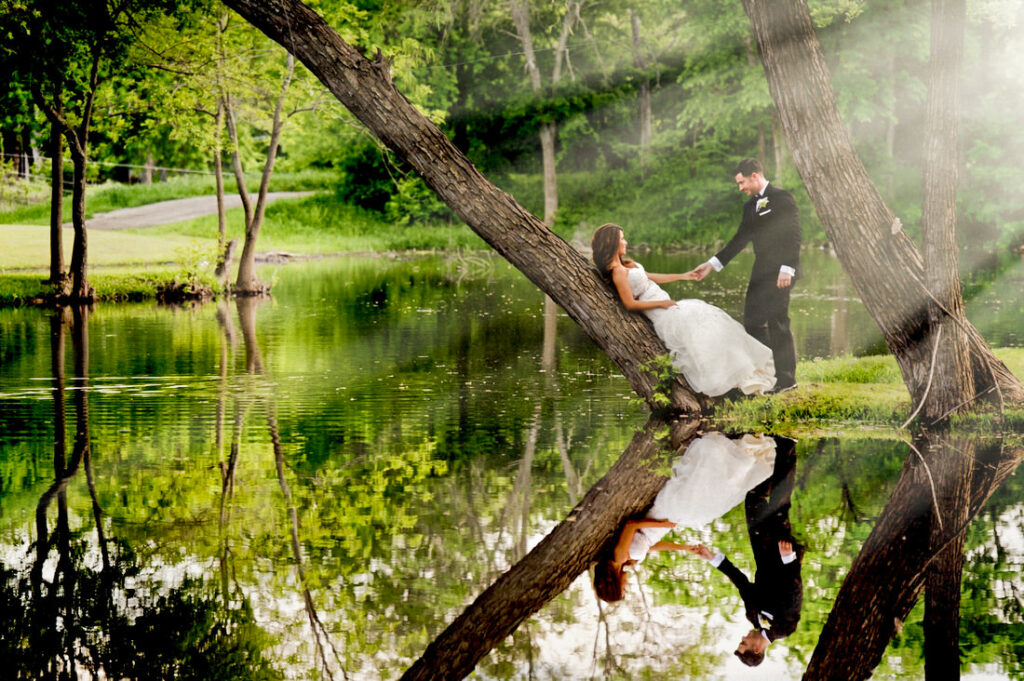
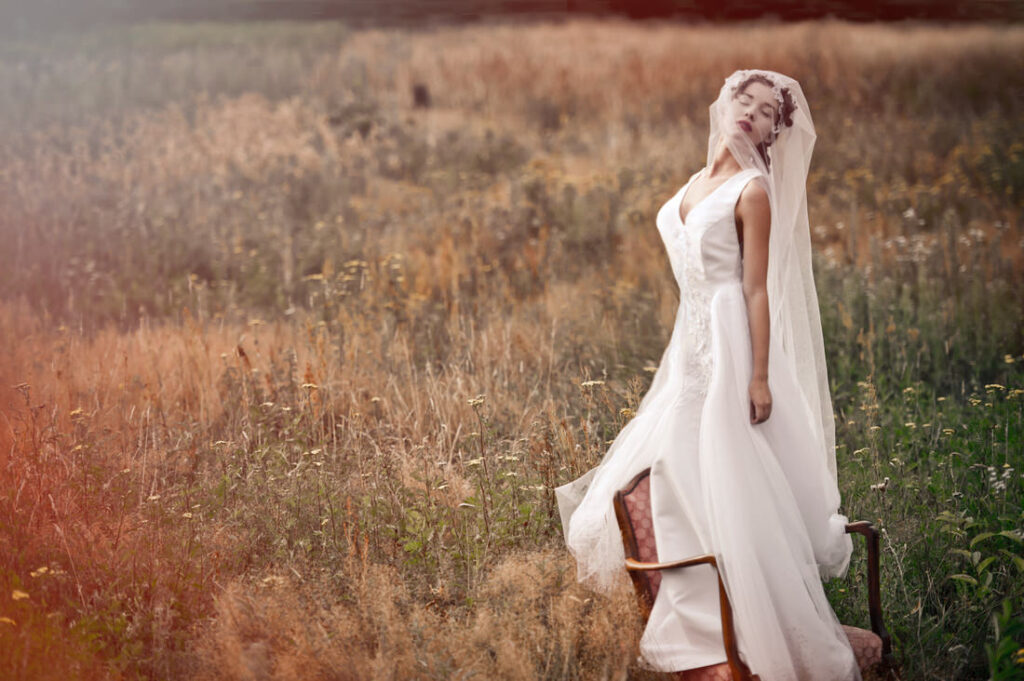
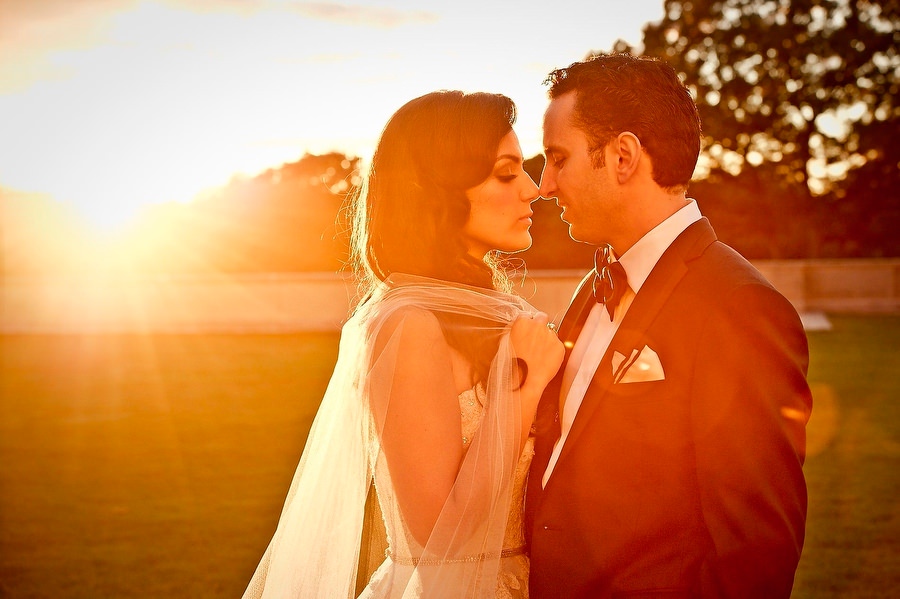
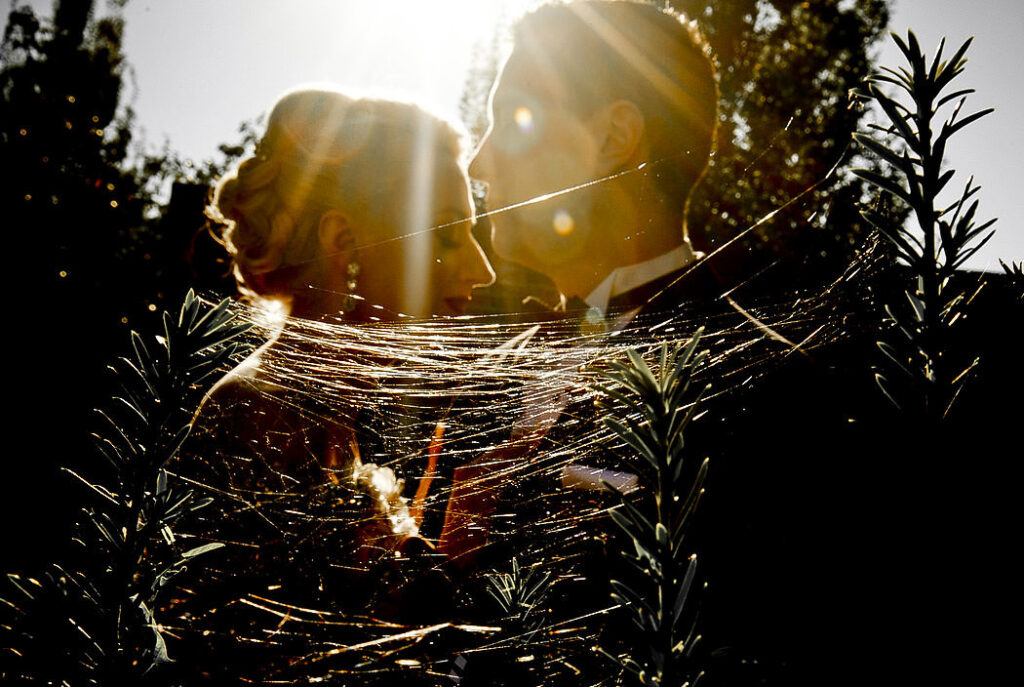
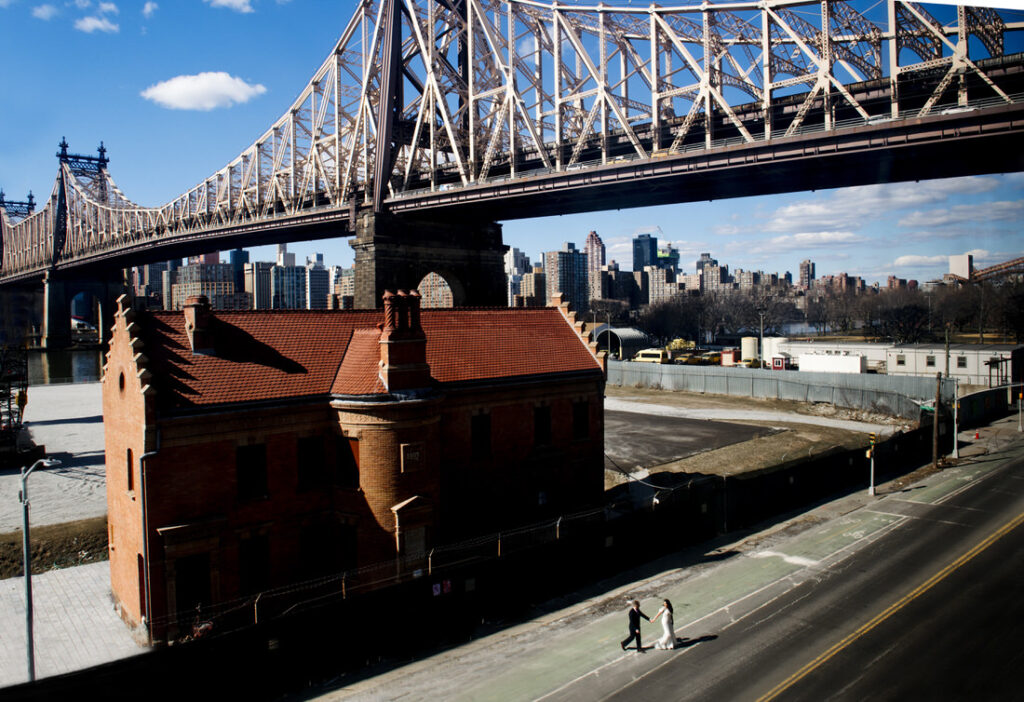
Description: This style relies solely on natural light for photography, avoiding the use of artificial lighting equipment.
Key Characteristics: Soft, natural, and authentic. Natural light wedding photography relies primarily on the use of available ambient light, such as sunlight or other sources of natural light, to capture beautiful and authentic moments throughout the wedding day. This style emphasizes the use of sunlight and avoids or minimizes the use of artificial lighting. Here are key features and aspects of natural light wedding photography:
- Soft and Flattering Light:
- Natural light, especially during the golden hours (early morning or late afternoon), provides soft and flattering illumination. This type of light is often preferred for its ability to create a warm and romantic atmosphere.
- Candid Moments:
- Natural light wedding photography is well-suited for capturing candid and spontaneous moments. The unobtrusive nature of natural light allows the photographer to document events as they unfold naturally.
- Outdoor Settings:
- This style is particularly effective in outdoor settings where abundant natural light is available. Gardens, parks, beaches, and other outdoor venues provide ample opportunities for utilizing natural light.
- Emphasis on the Environment:
- Natural light photography often incorporates the surrounding environment into the composition. This includes using the landscape, architecture, and other elements to enhance the overall aesthetic of the images.
- Golden Hour Shots:
- Photographers often aim to schedule key portrait sessions during the golden hours, shortly after sunrise or before sunset. The warm and soft light during these times can add a magical quality to the images.
- Minimized Artificial Lighting:
- While some natural light photographers may use minimal artificial lighting, the primary focus is on utilizing the available natural light sources. This can result in a more organic and unprocessed look to the images.
- Silhouettes and Backlighting:
- Natural light photographers may experiment with creative techniques, such as capturing silhouettes or using backlighting, to add variety and visual interest to their shots.
- Flexibility and Adaptability:
- Natural light photographers must be flexible and adaptable to changing lighting conditions. They may adjust their shooting angles or move to different locations to make the most of available light throughout the day.
- Indoor Natural Light Photography:
- While natural light photography is often associated with outdoor settings, it can also be applied indoors. Large windows and open spaces with plenty of natural light provide opportunities for capturing beautiful, softly lit moments.
- Minimal Post-Processing:
- Natural light images may require minimal post-processing, as the goal is often to preserve the authentic and organic feel of the photographs. Post-processing is typically kept subtle to maintain the natural look of the captured moments.
Couples who appreciate a light and airy feel to their wedding photos, with an emphasis on the beauty of natural surroundings, often choose natural light wedding photography. The result is a collection of images that showcase the genuine moments of the day in a soft and romantic atmosphere.
Dramatic Style:
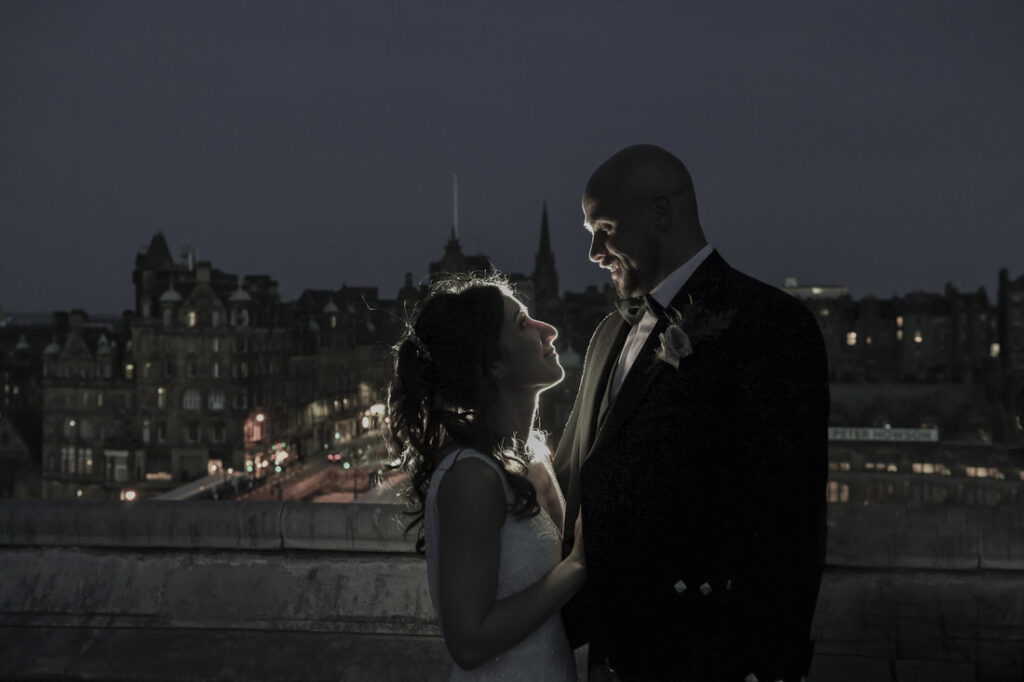
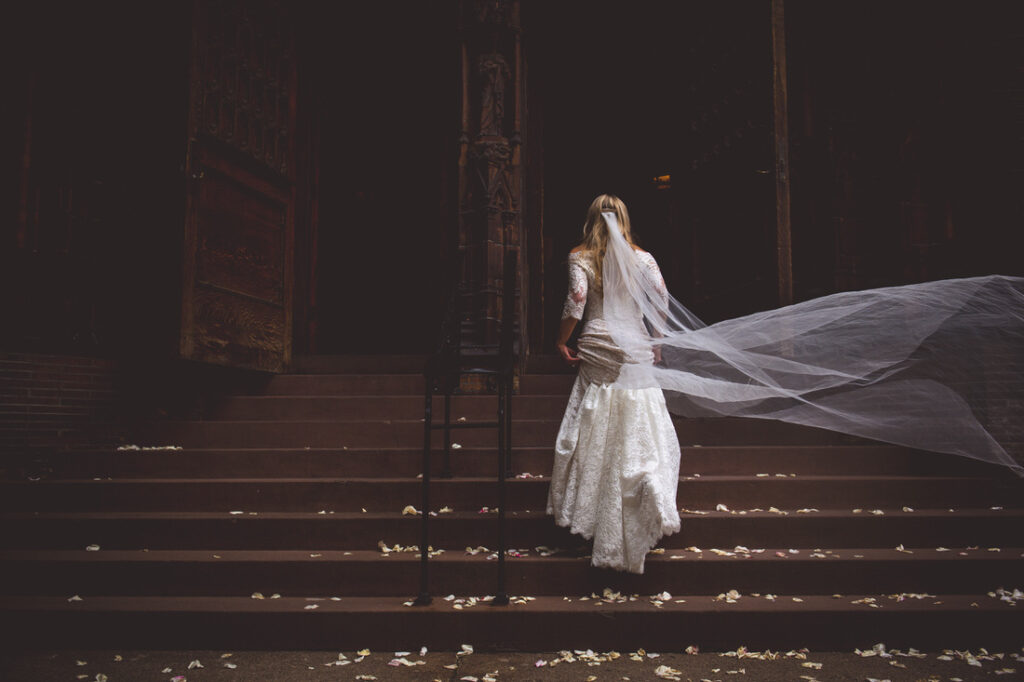
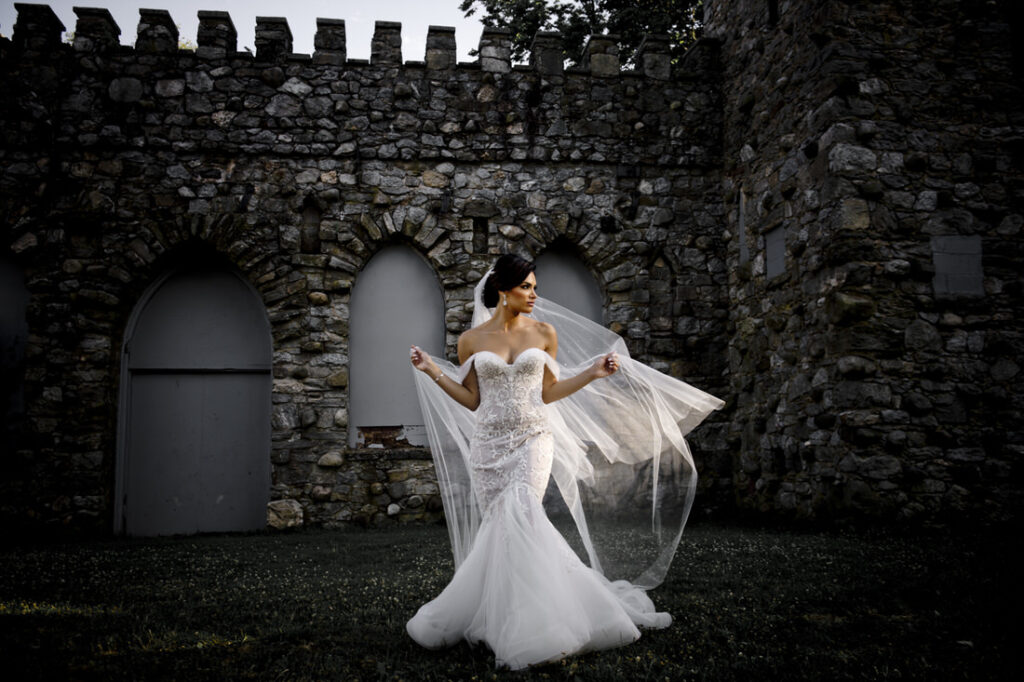
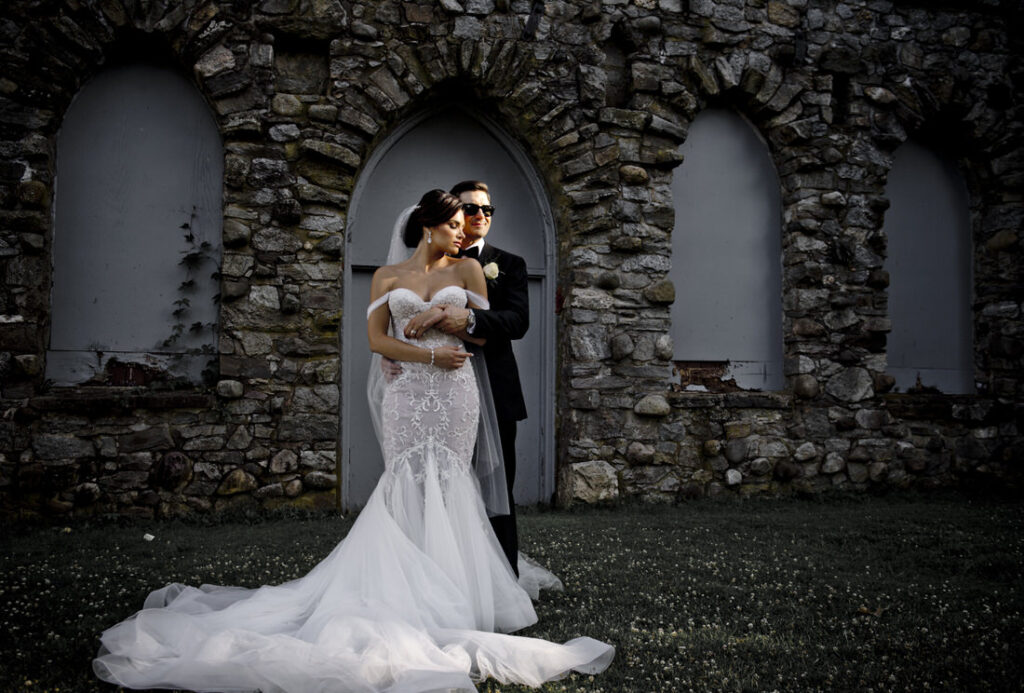
Description: This style emphasizes dramatic lighting and composition to create impactful and emotionally charged images.
Key Characteristics: Bold, dramatic, and intense. Dramatic style wedding photography is characterized by bold, high-contrast images that convey a sense of intensity and emotion. This style often involves creative lighting, dynamic compositions, and a focus on creating visually striking and impactful photographs. Here are key features and aspects of dramatic/moody-style wedding photography:
- Creative Lighting:
- Dramatic wedding photographers often use creative lighting techniques to enhance the mood and atmosphere of the images. This may include the use of off-camera flash, backlighting, or dramatic shadows to create a sense of depth and dimension.
- Contrast and Shadows:
- High contrast is a hallmark of dramatic photography. The interplay between light and shadow is used to create visually compelling and dynamic compositions. Deep shadows and well-defined highlights add drama to the images.
- Bold Compositions:
- Dramatic wedding photographers often experiment with bold compositions, unique angles, and unconventional framing to create images that stand out. This may involve capturing dramatic wide shots or focusing on specific details for impact.
- Intense Emotions:
- The dramatic style aims to capture intense and powerful emotions. Whether it’s the joy of celebration, the solemnity of a ceremony, or the passion between the couple, the images emphasize the emotional depth of the wedding day.
- Dynamic Poses:
- Couples and bridal parties may be posed in dynamic and bold ways to add energy and movement to the photographs. This can include action poses or using the environment to create visually compelling scenes.
- Use of Color Grading:
- Color grading plays a significant role in dramatic wedding photography. Photographers may manipulate colors to enhance the overall mood, using rich tones or even monochromatic palettes to evoke a specific emotional response.
- Attention to Details:
- While the focus is on creating dramatic and impactful images, photographers still pay attention to the details that contribute to the overall aesthetic. This may include capturing intricate textures, accessories, or other elements that add depth to the images.
- Environmental Elements:
- The surroundings and environment play a crucial role in dramatic wedding photography. Whether it’s an urban setting with striking architecture or a natural landscape with dramatic vistas, the environment is used to complement the overall mood.
- Post-Processing Techniques:
- Post-processing is often used to enhance the dramatic effect. This may involve adjusting contrast, highlights, and shadows, as well as applying filters or other editing techniques to achieve the desired look.
- Cinematic Influence:
- Dramatic wedding photography may draw inspiration from cinematic techniques, aiming to create images that resemble still frames from a movie. This influence can be seen in the overall storytelling and composition.
Couples who are drawn to bold and visually impactful imagery, with an emphasis on intense emotions and creative compositions, often choose dramatic style wedding photography. The result is a collection of images that not only document the wedding day but also convey a sense of artistry and emotion.
Drone Photography:
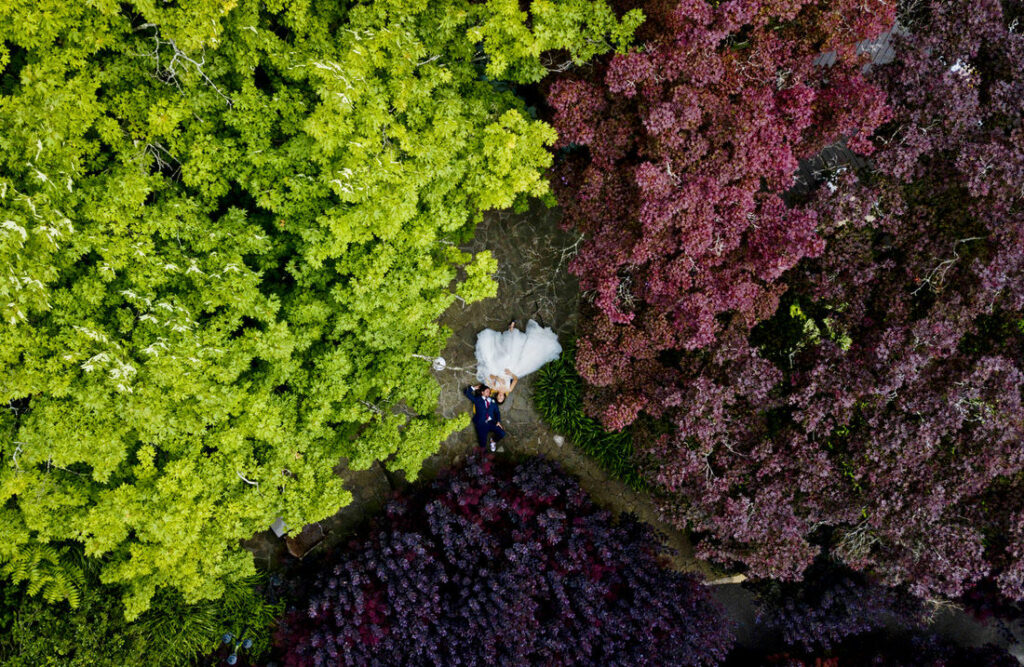
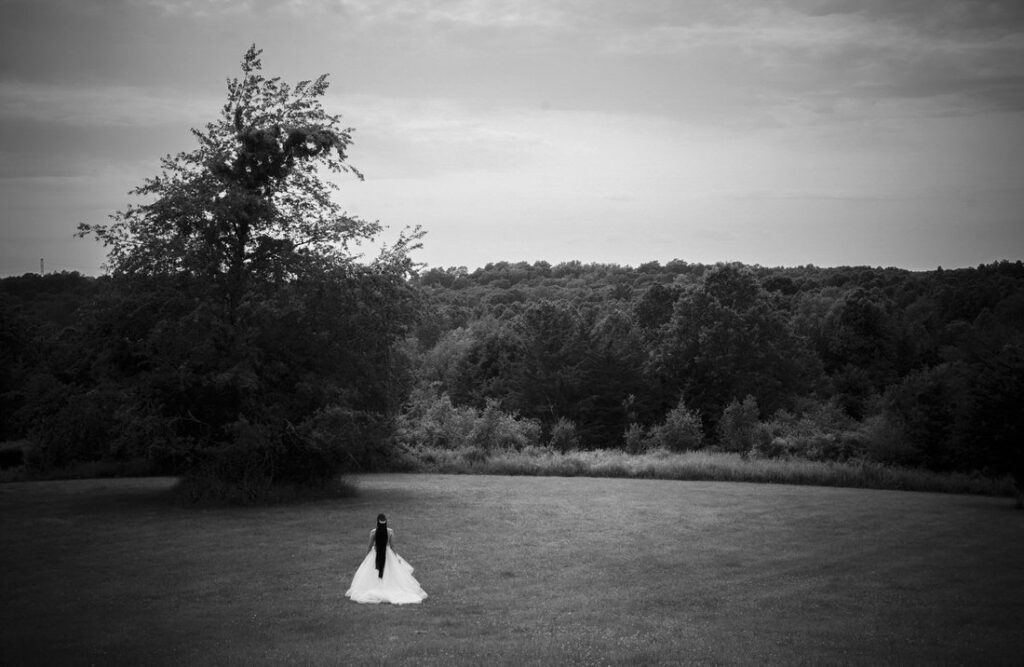
Description: Utilizing drones for aerial shots provides a unique perspective of the wedding venue and surrounding landscapes.
Key Characteristics: Aerial, expansive, and panoramic. Drone wedding photography has become increasingly popular in recent years due to the unique perspectives and stunning aerial shots it can offer. Here are some key points to consider if you’re thinking about incorporating drone photography into a wedding:
- Legal and Regulatory Considerations:
- Before using a drone for wedding photography, it’s crucial to be aware of and comply with local regulations regarding drone usage. Check with aviation authorities and obtain any necessary permits or approvals.
- Hire a Professional Drone Operator:
- While some hobbyists may have drones, it’s advisable to hire a professional drone operator with experience in aerial photography for important events like weddings. They should be skilled in flying drones safely and capturing high-quality footage.
- Scout the Location:
- Before the wedding day, the drone operator should visit the wedding venue to assess the surroundings, identify potential flight restrictions, and plan for optimal aerial shots. Familiarity with the location helps in ensuring smooth and safe drone operation.
- Coordinate with the Wedding Photographer:
- Communication between the drone operator and the ground photographer is crucial. They should work together to avoid interference and ensure that both ground and aerial shots complement each other.
- Consider the Noise:
- Drones can be noisy, so it’s important to consider the impact on the wedding ceremony. Discuss with the couple and the officiant to determine the best times for drone use to minimize disruption.
- Capture Unique Perspectives:
- The advantage of drone photography is the ability to capture unique and breathtaking aerial perspectives. Use the drone to create cinematic shots of the venue, capture the scale of the wedding party, or document the surroundings.
- Backup Equipment and Batteries:
- Like any electronic device, drones can experience technical issues. Ensure that the drone operator has backup equipment and sufficient batteries to cover the entire event.
- Weather Considerations:
- Drones are sensitive to weather conditions, so it’s important to monitor the weather forecast. Avoid flying in strong winds, rain, or adverse weather conditions to ensure the safety of the equipment and guests.
- Respect Privacy:
- Be mindful of privacy concerns, both for the couple and the wedding guests. Communicate with the couple about the areas that should be avoided to respect the privacy of the event.
- Editing and Integration:
- After the event, the aerial footage can be edited and integrated into the overall wedding video or photo album. Ensure that the final product complements the traditional ground-based shots.
Remember that while drone photography can add a unique and memorable element to wedding visuals, it should be done responsibly and in compliance with relevant regulations. Communication and coordination among all parties involved are key to a successful drone wedding photography experience.
Destination Wedding Style:
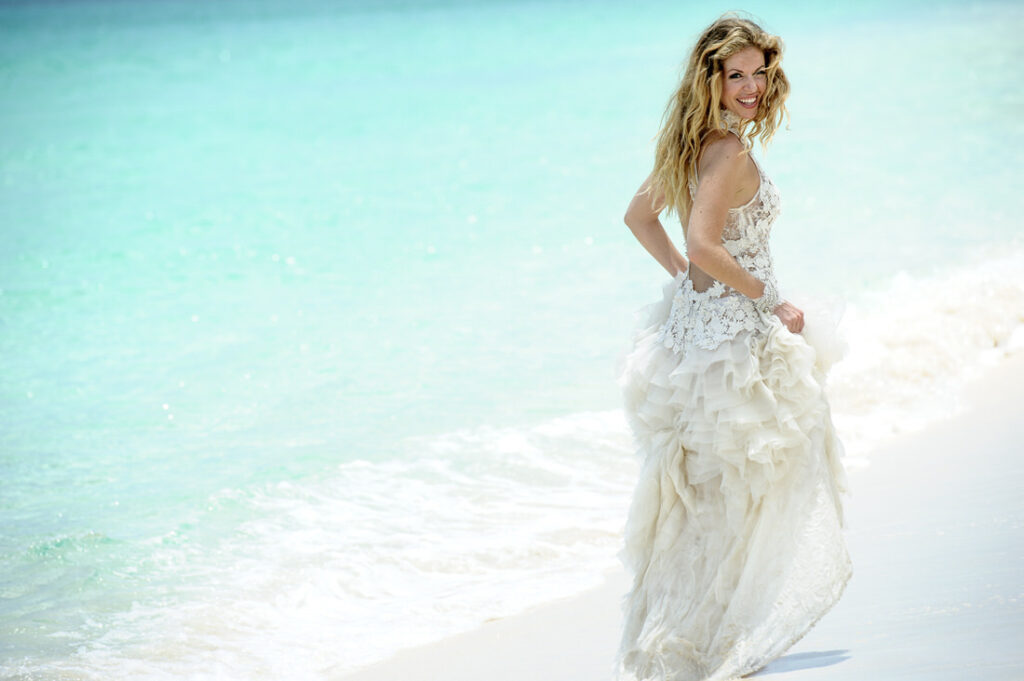
Playful Wedding Photography:
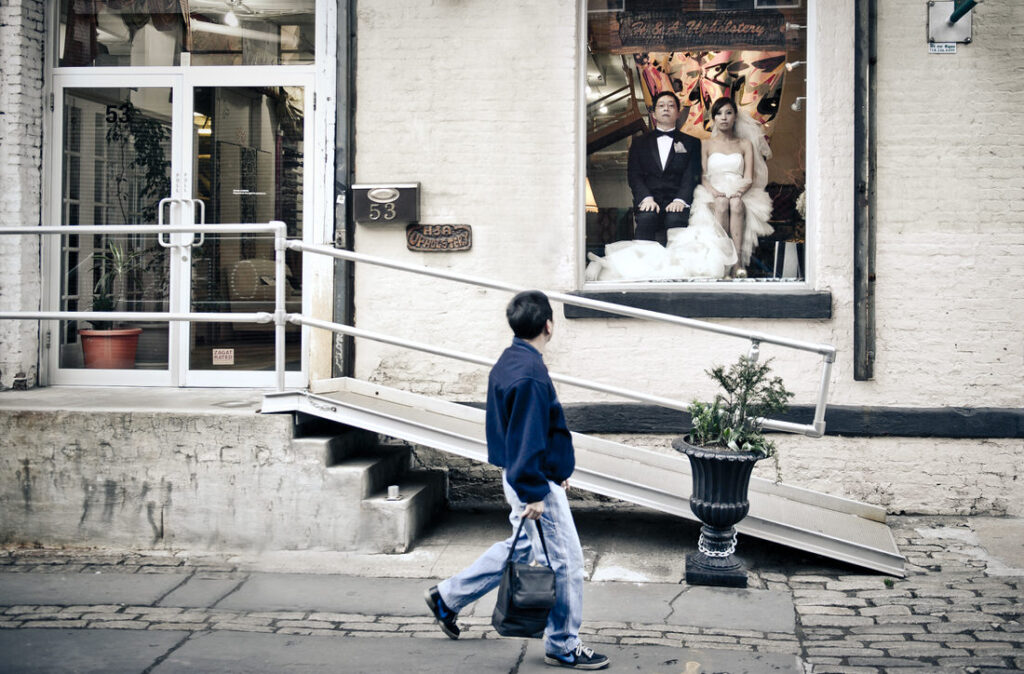
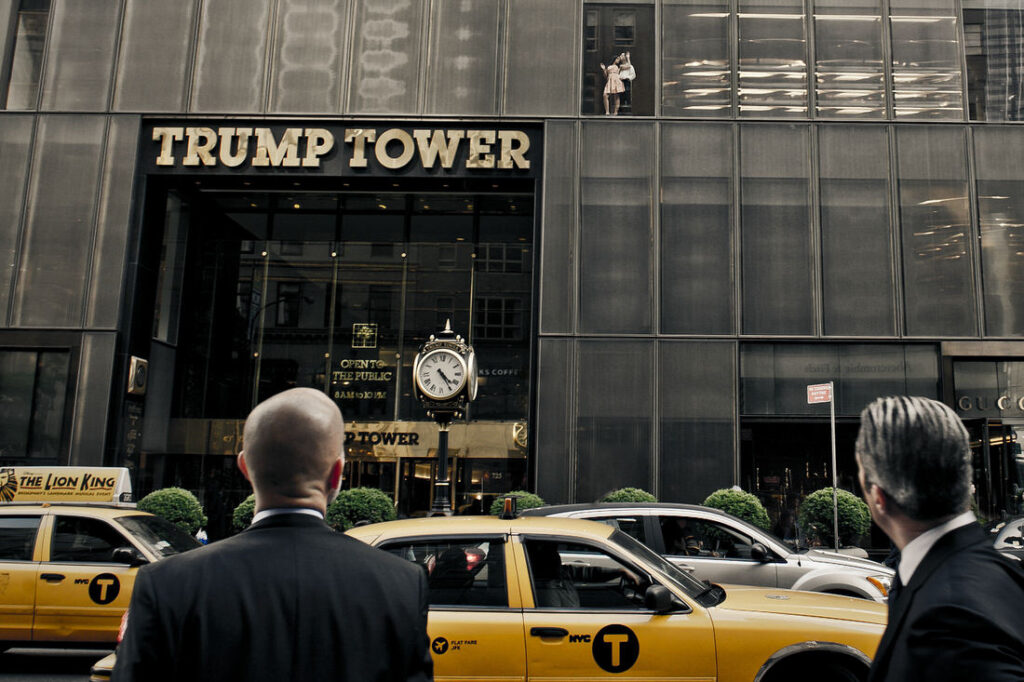
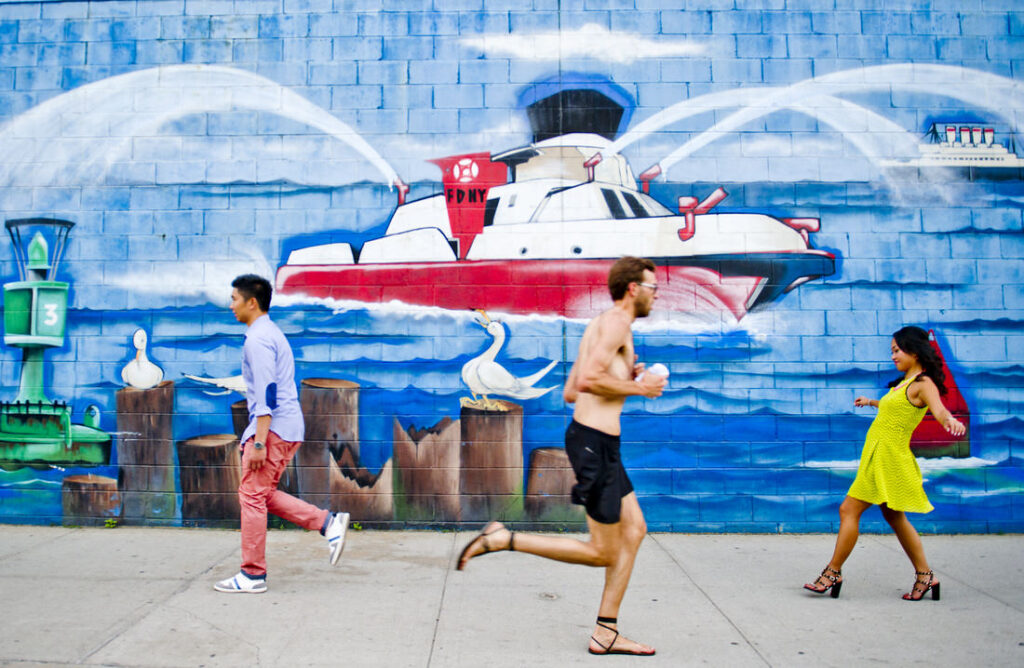
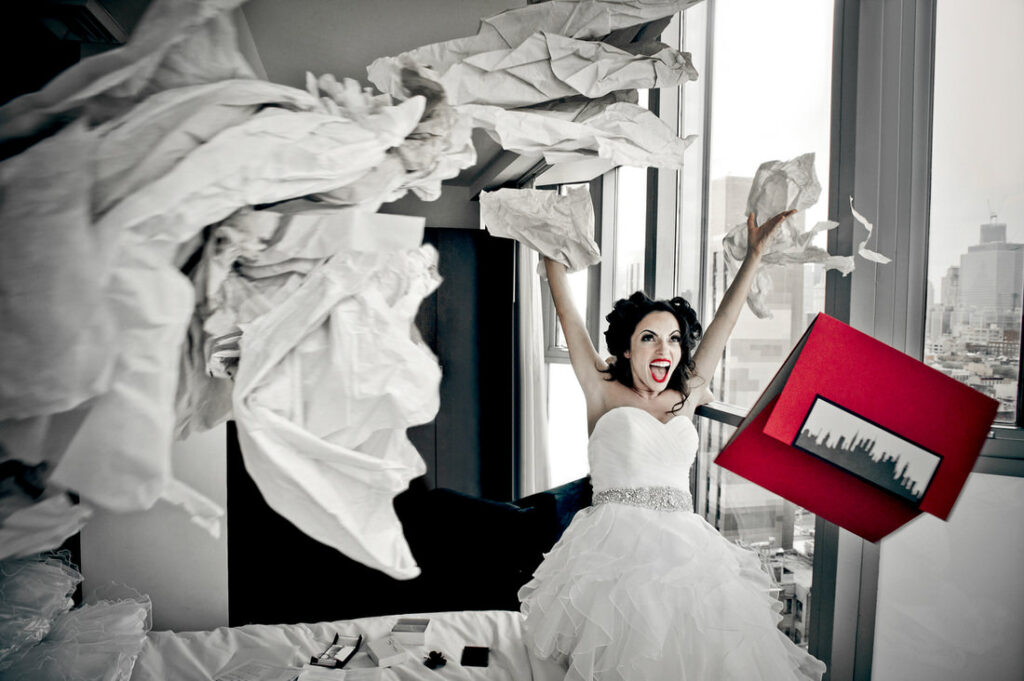
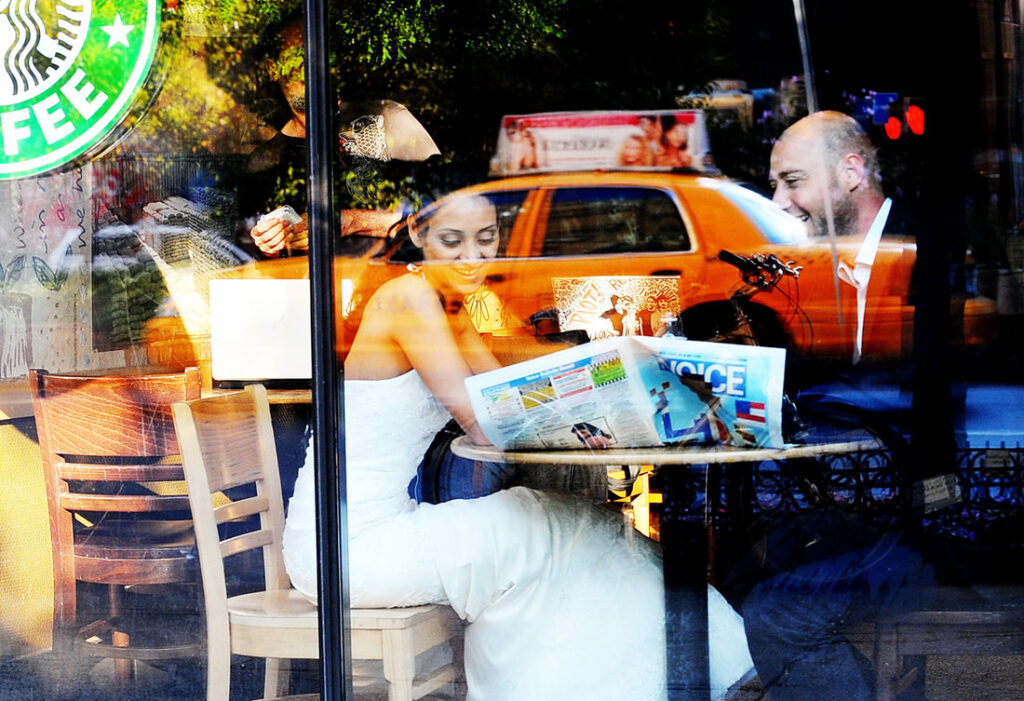
Playful wedding photography is a delightful and creative approach to capturing the joy, love, and unique moments of a couple’s special day. Here are some ideas and tips for creating playful wedding photos:
- Candid Moments:
- Capture candid moments of the couple laughing, joking, or sharing a private moment. These shots often convey genuine emotions and tell a beautiful story.
- Playful Poses:
- Encourage the couple to strike playful poses. This could include piggyback rides, twirls, or playful gestures that reflect their personalities.
- Games and Activities:
- Incorporate games or activities into the photo session. For example, have the couple play a game of chess, or Jenga, or engage in other activities they enjoy together.
- Props:
- Integrate fun and meaningful props into the photoshoot. This could range from balloons and confetti to quirky signs or even items that have personal significance to the couple.
- Location Matters:
- Choose locations that allow for playfulness. A beach, park, or vibrant cityscape can provide a lively backdrop for playful wedding photos.
- Incorporate Pets:
- If the couple has pets, include them in the photoshoot. Pets add an element of spontaneity and cuteness to the pictures.
- Dance Shots:
- Capture the couple dancing, whether it’s a choreographed dance or just a fun and carefree moment on the dance floor.
- Silhouette Shots:
- Experiment with silhouette shots during sunset or in creatively lit environments. Silhouettes can evoke a sense of mystery and playfulness.
- Use of Color:
- Play with vibrant and cheerful colors. This can be reflected in the couple’s clothing, accessories, or the overall theme of the wedding.
- Humorous Moments:
- Look for humorous or light-hearted moments during the ceremony, reception, or interactions with guests. A well-timed candid shot can capture the essence of the day.
- Photo Booth Fun:
- Set up a photo booth with playful props and encourage guests to take silly and fun pictures. This can be a great way to capture the joyous atmosphere of the wedding.
- Creative Editing:
- During the post-processing phase, consider using creative editing techniques to enhance the playfulness of the photos. This could include adding filters, overlays, or incorporating a whimsical style.
Remember, the key is to create an atmosphere where the couple feels comfortable expressing their love and personalities. Encourage them to be themselves, and be ready to capture those spontaneous, playful moments that make their wedding day truly memorable.
Description: This style is tailored for weddings in exotic or unique locations, incorporating the destination’s atmosphere and culture.
Key Characteristics: Location-centric, cultural, and vibrant.
Black and White/ Monochrome Style:
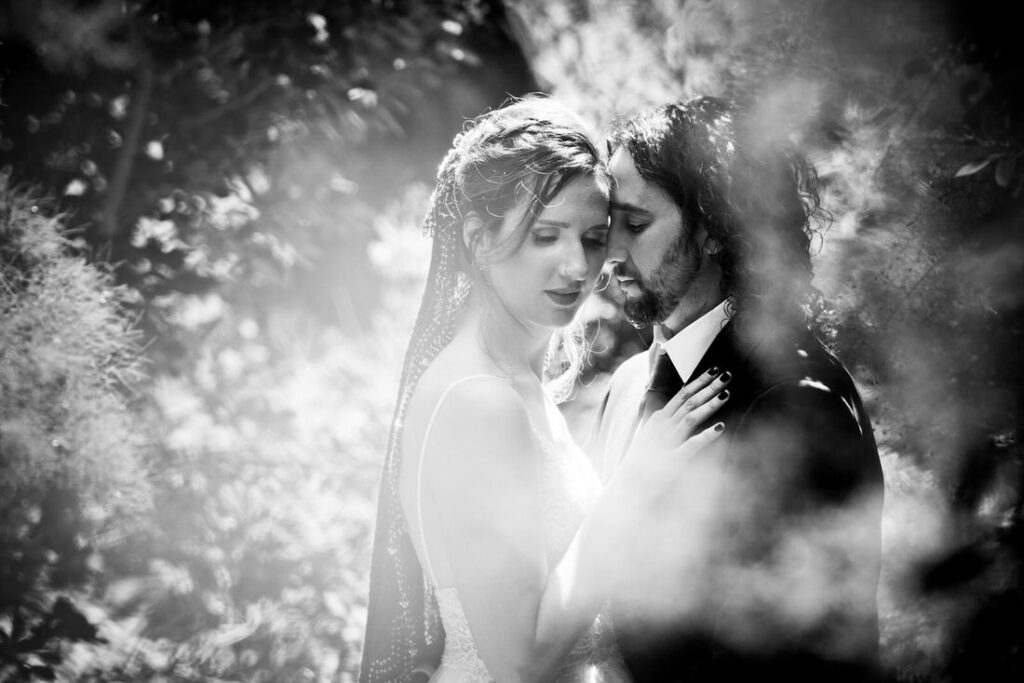
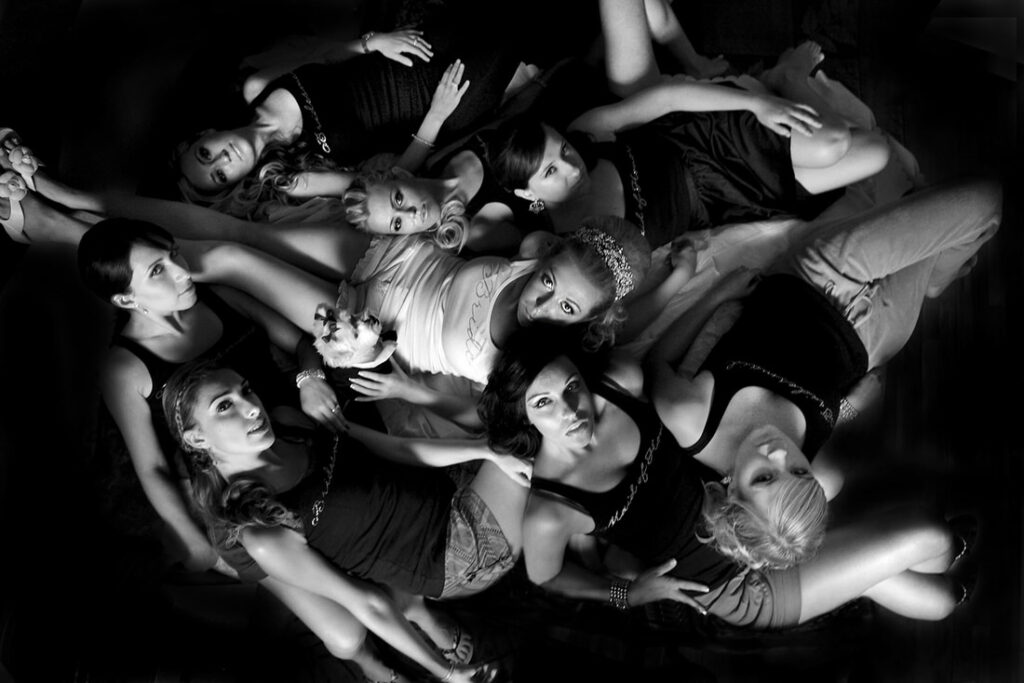
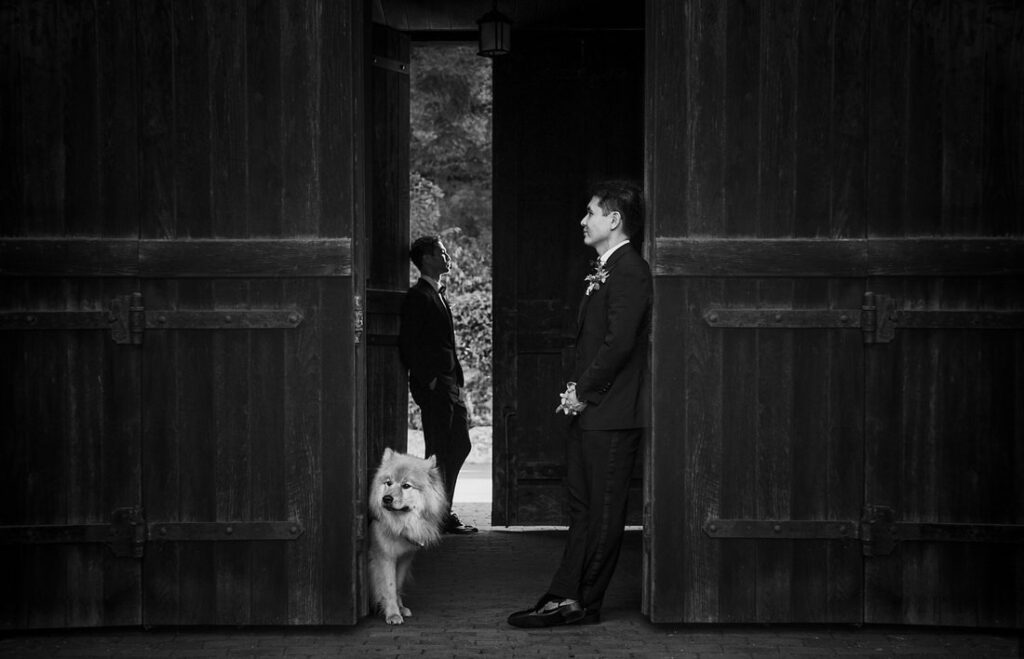
Description: This style involves shooting and delivering images in black and white or monochrome, adding a classic and timeless feel.Key
Characteristics: Classic, timeless, and emotional
Tips for Wedding Photographers:
- Communication: Discuss and understand the couple’s preferences before the wedding day.
- Preparation: Familiarize yourself with the venue and lighting conditions.
- Creativity: Don’t be afraid to experiment with angles, compositions, and post-processing techniques.
- Candid Moments: Capture the spontaneous and emotional moments that make the day unique.
- Equipment: Have backup equipment and be ready to adapt to different situations.
- Editing: Develop a consistent editing style that complements your chosen photography style.
By incorporating elements from these various styles, New York wedding photographers can create a diverse and memorable collection of images that truly capture the essence of the special day. Remember, flexibility and a keen understanding of your client’s preferences are key to successful wedding photography. When looking for a wedding photographer, make sure to communicate your preferences, review their portfolios, and discuss your specific needs and budget. It’s also essential to meet with the photographers in person or virtually to ensure that your personalities and visions align.
Matthew Sowa-NYC Wedding Photographer for all couples who want to celebrate their love



